Kelly Jensen's Blog, page 107
August 3, 2014
Get Genrefied: Climate Fiction (Cli-Fi)
Every month, we've been highlighting a genre or subgenre within YA and offering up a definition, a discussion, and a thick reading list featuring titles that fit. All of the guides can be found here under the tag genre fiction.
This month, rather than tackle a traditional genre or subgenre, I thought it would be worthwhile to tackle an emerging theme in YA fiction that could easily become a category, if not a full-blown genre within itself: climate fiction. Climate fiction, or cli-fi for short, has been making waves throughout the adult literary world. What is cli-fi? It's exactly what it sounds like -- fiction that features climate change at the core of the story. The events within the story are caused by or impacted profoundly by the changing climate on Earth. It's meant to be both a key component of the story, as well as offer a bigger message about the impact we're leaving on the planet now. Over the last few years, it's hard to ignore the number of YA titles that could be classified as cli-fi.
The term cli-fi was coined by a climate activist in 2007 named Dan Bloom. You can read a bit about how the term arose and the history behind it here. It's noted there that Bloom believes, at least at this point, it's best a subgenre of science fiction. But because it's an evolving idea and one that could easily play out beyond science fiction, there's still growth and change to happen with it. He notes, too, that it's up to those outside the science fiction sphere to see whether it's got a lasting power or not.
What makes cli-fi different from other genres, and why it may not even be a traditional genre at all, is that titles which fit the category -- or may fit the category in the future -- fall across a range of genres and subgenres. Climate fiction could easily include appropriate contemporary realistic fiction, fantasy, and, as has been seen most frequently within YA, dystopia (which we know is a subgenre of science fiction but which seems to operate in YA as its own genre). I haven't seen it, but I suspect there could be an argument that a historical novel could also be cli-fi, and perhaps there already is but it hasn't popped up in my searching. No doubt horror is a ripe arena for cli-fi, too.
The discussion of cli-fi as a genre exploded in the last year and a half, but the bulk of writing about it so far has focused on adult fiction, rather than YA. Although Bloom noted in the article above he was disappointed that major outlets who talked about cli-fi didn't credit him appropriately as the term's creator, he thinks that the fact it's out there and people are talking about what it is and what it could be really important. Here's a look at some further reading on the topic:
This piece at NPR from April 2013 defines cli-fi more restrictively than I do, noting, "while sci-fi usually takes place in a dystopian future, cli-fi happens in a dystopian present." You may recall from a prior genre guide that a dystopia is a very specific type of future world, and so defining cli-fi as a "dystopian present" is quite limiting. In May 2013, The Guardian talked about the rise of the term to describe an emerging trend in fiction. VOYA Magazine did a feature on cli-fi in February of this year, and though the magazine focuses on youth topics, the bulk of the piece featured adult titles with teen crossover appeal. You can access it as a .pdf here. Publishing Perspectives talked about cli-fi earlier this summer, offering up a bit of how this theme of climate and environmental change has been around for quite a while and how now, we have a better term to describe it. The New York Times "Room for Debate" feature at the end of July was dedicated entirely to arguing whether fiction can influence how we react to climate change.
Because this is such a new area of fiction -- or at least the term we used to describe this kind of fiction is so new -- there aren't many dedicated sites to these books. But the one that does exist is constantly growing and expanding: Nature Fiction and Cli-Fi Books. Keep this one on your radar if this is a genre that interests you. I think that as we think more about how we label and discuss books, cli-fi is going to become a really worthwhile term and concept to have in mind. Less from the standpoint of organizing books but more from the standpoint of how to recommend and connect different books to one another. If cli-fi is a wider swath of books beyond science fiction -- and I think it is -- it's a really valuable means of offering new books to readers hungry for books that explore the effect climate has on not just the globe, but the people living on it.
Here's a look at a pile of YA titles that could easily be categorized (or genrefied!) as cli-fi. The bulk have published in the last couple of years, though a few come before that. Any additional titles you can think of that would fit, I'd love to hear about, especially if it's something outside of science fiction or dystopia. All descriptions are via WorldCat.
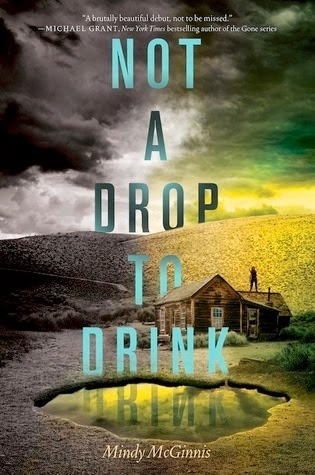
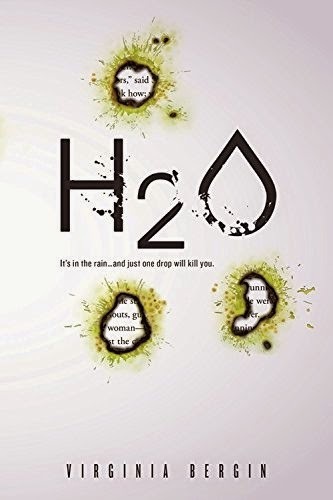
Not A Drop To Drink by Mindy McGinnis: Sixteen-year-old Lynn will do anything to protect her valuable water source, but the arrival of new neighbors forces her to reconsider her attitudes.
H2O by Virginia Bergin (October 7): When a strange rain falls bearing a fatal, contagious disease, Ruby finds herself alone with the only drinkable water quickly running out.

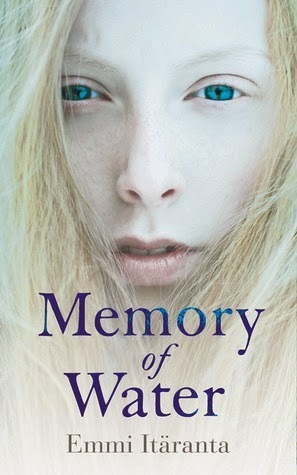
Love in the Time of Global Warming by Francesca Lia Block: After a devastating earthquake destroys the West Coast, causing seventeen-year-old Penelope to lose her home, her parents, and her ten-year-old brother, she navigates a dark world, holding hope and love in her hands and refusing to be defeated.
Memory of Water by Emmi Itaranta: In the far north of the Scandinavian Union, now occupied by the power state of New Qian, seventeen-year-old Noria Kaitio studies to become a tea master like her father. It is a position that holds great responsibility and a dangerous secret. Tea masters alone know the location of hidden water sources, including the natural spring that once provided water for her whole village. When Noria's father dies, the secret of the spring reaches the new military commander. and the power of the army is vast indeed. But the precious water reserve is not the only forbidden knowledge Noria possesses, and resistance is a fine line. Threatened with imprisonment, and with her life at stake, Noria must make an excruciating, dangerous choice between knowledge and freedom.
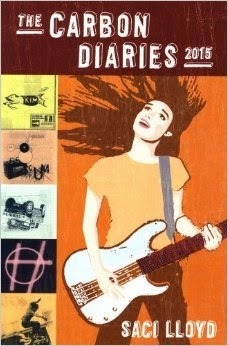
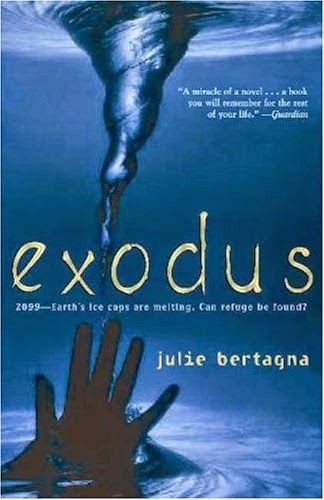
The Carbon Diaries 2015 (and its sequel, The Carbon Diaries 2017) by Saci Lloyd: In 2015, when England becomes the first nation to introduce carbon dioxide rationing in a drastic bid to combat climate change, sixteen-year-old Laura documents the first year of rationing as her family spirals out of control.
Exodus by Julie Bertagna: In the year 2100, as the island of Wing is about to be covered by water, fifteen-year-old Mara discovers the existence of New World sky cities that are safe from the storms and rising waters, and convinces her people to travel to one of these cities in order to save themselves.
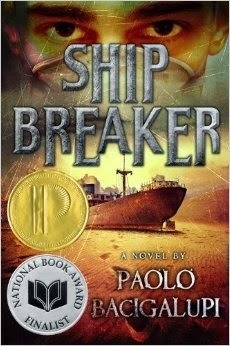
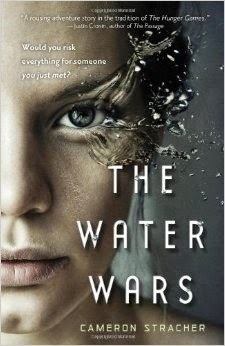
Ship Breaker by Paolo Bacigalupi: In a futuristic world, teenaged Nailer scavenges copper wiring from grounded oil tankers for a living, but when he finds a beached clipper ship with a girl in the wreckage, he has to decide if he should strip the ship for its wealth or rescue the girl.
The Water Wars by Cameron Stracher: In a world where water has become a precious resource, Vera and her brother befriend a boy who seems to have unlimited access to water and who suspiciously disappears, prompting a dangerous search challenged by pirates, a paramilitary group, and corporations.
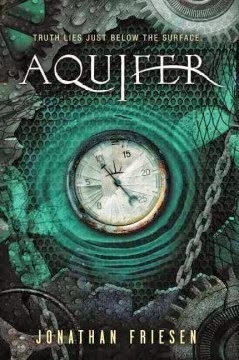
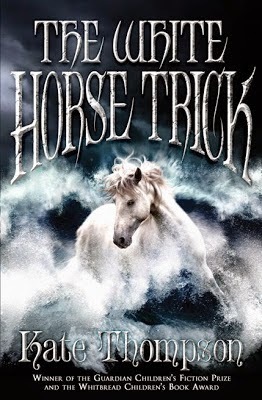
Aquifer by Jonathan Friesen: In 2250, water is scarce and controlled by tyrants, but when sixteen-year-old Luca descends to the domain of the Water Rats, he meets one who captures his heart and leads him to secrets about a vast conspiracy, and about himself.
The White Horse Trick by Kate Thompson: In the late twenty-first century, dramatic climate change has made life in Ireland almost impossible, and soon Tir na n'Og is faced with a refugee problem, partly because of a warlord who is a member of the Liddy family.

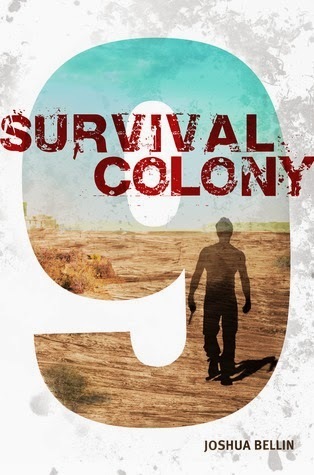
Ashfall by Mike Mullin (series): After the eruption of the Yellowstone supervolcano destroys his city and its surroundings, fifteen-year-old Alex must journey from Cedar Falls, Iowa, to Illinois to find his parents and sister, trying to survive in a transformed landscape and a new society in which all the old rules of living have vanished.
Survival Colony 9 by Joshua Bellin: In a future world of dust and ruin, fourteen-year-old Querry Genn struggles to recover the lost memory that might save the human race.Querry is a member of Survival Colony Nine, one of the small, roving groups of people who outlived the wars and environmental catastrophes that destroyed the old world. The commander of Survival Colony Nine is his father, Laman Genn, who runs the camp with an iron will. He has to--because heat, dust, and starvation aren't the only threats in this ruined world. There are also the Skaldi. Monsters with the ability to infect and mimic human hosts, the Skaldi appeared on the planet shortly after the wars of destruction. No one knows where they came from or what they are. But if they're not stopped, it might mean the end of humanity. Six months ago, Querry had an encounter with the Skaldi--and now he can't remember anything that happened before then. If he can recall his past, he might be able to find the key to defeat the Skaldi. If he can't, he's their next victim. (Description via Goodreads)
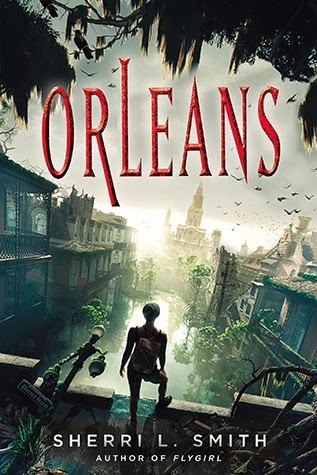

Orleans by Sherri L. Smith: Set in a futuristic, hostile Orleans landscape, Fen de la Guerre must deliver her tribe leader's baby over the Wall into the Outer States before her blood becomes tainted with Delta Fever.
Some Fine Day by Kat Ross: Sixteen-year-old Jansin Nordqvist is on the verge of graduating from the black ops factory known as the Academy. She's smart and deadly, and knows three things with absolute certainty: 1. When the world flooded and civilization retreated deep underground, there was no one left on the surface. 2. The only species to thrive there are the toads, a primate/amphibian hybrid with a serious mean streak. 3. There's no place on Earth where you can hide from the hypercanes, continent-sized storms that have raged for decades. Jansin has been lied to. On all counts. (Description via Goodreads).
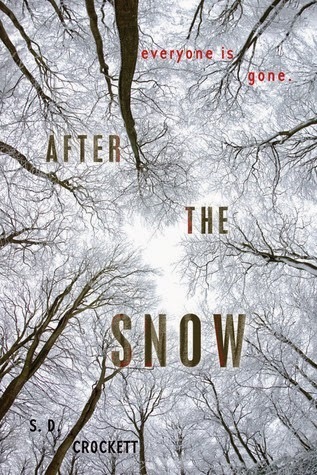
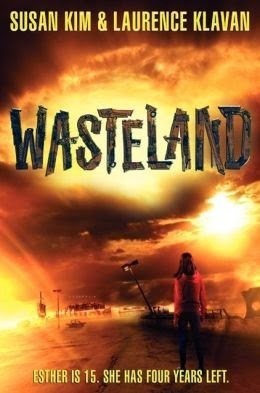
After the Snow by S. D. Crockett: Fifteen-year-old Willo Blake, born after the 2059 snows that ushered in a new ice age, encounters outlaws, halfmen, and an abandoned girl as he journeys in search of his family, who mysteriously disappeared from the freezing mountain that was their home.
Wasteland by Susan Kim and Laurence Klavan: In a post-apocalyptic world where everyone dies at age nineteen and rainwater contains a killer virus, loners Esther and Eli band together with a group of mutant, hermaphroditic outsiders to fight a corrupt ruler and save the town of Prin.
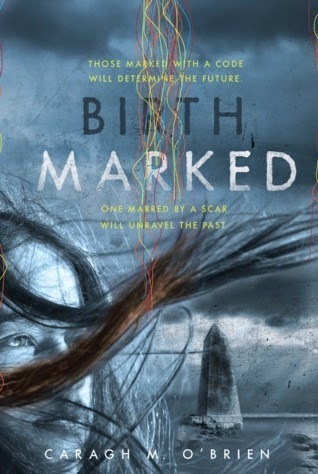
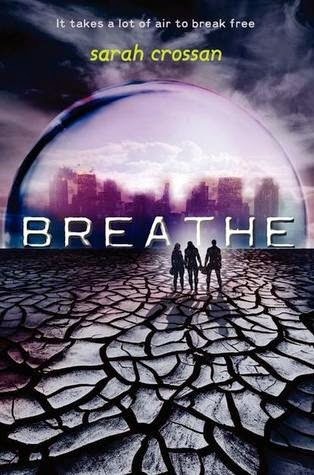
Birthmarked by Caragh M. O'Brien (series): In a future world baked dry by the sun and divided into those who live inside the wall and those who live outside it, sixteen-year-old midwife Gaia Stone is forced into a difficult choice when her parents are arrested and taken into the city.
Breathe by Sarah Crossan (series)In a barren land, a shimmering glass dome houses the survivors of the Switch, the period when oxygen levels plunged and the green world withered. A state lottery meant a lucky few won safety, while the rest suffocated in the thin air. And now Alina, Quinn, and Bea--an unlikely trio, each with their own agendas, their own longings and fears--walk straight into the heart of danger. With two days' worth of oxygen in their tanks, they leave the dome. What will happen on the third day?:
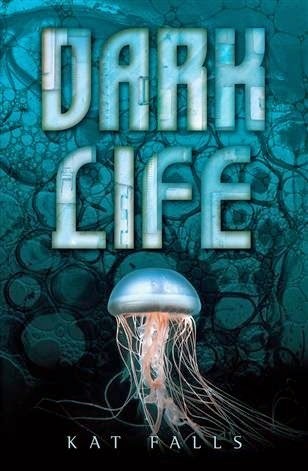
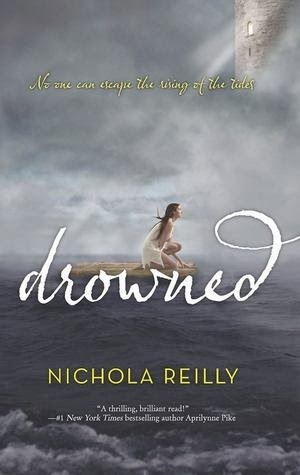
Dark Life by Kat Falls: When fifteen-year-old Ty, who has always lived on the ocean floor, joins Topside girl Gemma in the frontier's underworld to seek and stop outlaws who threaten his home, they learn that the government may pose an even greater threat.
Drowned by Nichola Reilly: Coe is one of the few remaining teenagers on the island of Tides. Deformed and weak, she is constantly reminded that in a world where dry land dwindles at every high tide, she is not welcome. The only bright spot in her harsh and difficult life is the strong, capable Tiam-- but love has long ago been forgotten by her society. The only priority is survival. Until the day their King falls ill, leaving no male heir to take his place. Unrest grows, and for reasons Coe cannot comprehend, she is invited into the privileged circle of royal aides. She soon learns that the dying royal is keeping a secret that will change their world forever. Is there an escape from the horrific nightmare that their island home has become? Coe must race to find the answers and save the people she cares about, before their world and everything they know is lost to the waters.

The Summer Prince by Alaya Dawn Johnson: In a Brazil of the distant future, June Costa falls in love with Enki, a fellow artist and rebel against the strict limits of the legendary pyramid city of Palmares Três' matriarchal government, knowing that, like all Summer Kings before him, Enki is destined to die.






 Related StoriesHacking, Gaming & Virtual RealityCensorship, Challenges, and Other Forms of Protest: A Reading ListTeenage Criminals
Related StoriesHacking, Gaming & Virtual RealityCensorship, Challenges, and Other Forms of Protest: A Reading ListTeenage Criminals
This month, rather than tackle a traditional genre or subgenre, I thought it would be worthwhile to tackle an emerging theme in YA fiction that could easily become a category, if not a full-blown genre within itself: climate fiction. Climate fiction, or cli-fi for short, has been making waves throughout the adult literary world. What is cli-fi? It's exactly what it sounds like -- fiction that features climate change at the core of the story. The events within the story are caused by or impacted profoundly by the changing climate on Earth. It's meant to be both a key component of the story, as well as offer a bigger message about the impact we're leaving on the planet now. Over the last few years, it's hard to ignore the number of YA titles that could be classified as cli-fi.
The term cli-fi was coined by a climate activist in 2007 named Dan Bloom. You can read a bit about how the term arose and the history behind it here. It's noted there that Bloom believes, at least at this point, it's best a subgenre of science fiction. But because it's an evolving idea and one that could easily play out beyond science fiction, there's still growth and change to happen with it. He notes, too, that it's up to those outside the science fiction sphere to see whether it's got a lasting power or not.
What makes cli-fi different from other genres, and why it may not even be a traditional genre at all, is that titles which fit the category -- or may fit the category in the future -- fall across a range of genres and subgenres. Climate fiction could easily include appropriate contemporary realistic fiction, fantasy, and, as has been seen most frequently within YA, dystopia (which we know is a subgenre of science fiction but which seems to operate in YA as its own genre). I haven't seen it, but I suspect there could be an argument that a historical novel could also be cli-fi, and perhaps there already is but it hasn't popped up in my searching. No doubt horror is a ripe arena for cli-fi, too.
The discussion of cli-fi as a genre exploded in the last year and a half, but the bulk of writing about it so far has focused on adult fiction, rather than YA. Although Bloom noted in the article above he was disappointed that major outlets who talked about cli-fi didn't credit him appropriately as the term's creator, he thinks that the fact it's out there and people are talking about what it is and what it could be really important. Here's a look at some further reading on the topic:
This piece at NPR from April 2013 defines cli-fi more restrictively than I do, noting, "while sci-fi usually takes place in a dystopian future, cli-fi happens in a dystopian present." You may recall from a prior genre guide that a dystopia is a very specific type of future world, and so defining cli-fi as a "dystopian present" is quite limiting. In May 2013, The Guardian talked about the rise of the term to describe an emerging trend in fiction. VOYA Magazine did a feature on cli-fi in February of this year, and though the magazine focuses on youth topics, the bulk of the piece featured adult titles with teen crossover appeal. You can access it as a .pdf here. Publishing Perspectives talked about cli-fi earlier this summer, offering up a bit of how this theme of climate and environmental change has been around for quite a while and how now, we have a better term to describe it. The New York Times "Room for Debate" feature at the end of July was dedicated entirely to arguing whether fiction can influence how we react to climate change.
Because this is such a new area of fiction -- or at least the term we used to describe this kind of fiction is so new -- there aren't many dedicated sites to these books. But the one that does exist is constantly growing and expanding: Nature Fiction and Cli-Fi Books. Keep this one on your radar if this is a genre that interests you. I think that as we think more about how we label and discuss books, cli-fi is going to become a really worthwhile term and concept to have in mind. Less from the standpoint of organizing books but more from the standpoint of how to recommend and connect different books to one another. If cli-fi is a wider swath of books beyond science fiction -- and I think it is -- it's a really valuable means of offering new books to readers hungry for books that explore the effect climate has on not just the globe, but the people living on it.
Here's a look at a pile of YA titles that could easily be categorized (or genrefied!) as cli-fi. The bulk have published in the last couple of years, though a few come before that. Any additional titles you can think of that would fit, I'd love to hear about, especially if it's something outside of science fiction or dystopia. All descriptions are via WorldCat.


Not A Drop To Drink by Mindy McGinnis: Sixteen-year-old Lynn will do anything to protect her valuable water source, but the arrival of new neighbors forces her to reconsider her attitudes.
H2O by Virginia Bergin (October 7): When a strange rain falls bearing a fatal, contagious disease, Ruby finds herself alone with the only drinkable water quickly running out.


Love in the Time of Global Warming by Francesca Lia Block: After a devastating earthquake destroys the West Coast, causing seventeen-year-old Penelope to lose her home, her parents, and her ten-year-old brother, she navigates a dark world, holding hope and love in her hands and refusing to be defeated.
Memory of Water by Emmi Itaranta: In the far north of the Scandinavian Union, now occupied by the power state of New Qian, seventeen-year-old Noria Kaitio studies to become a tea master like her father. It is a position that holds great responsibility and a dangerous secret. Tea masters alone know the location of hidden water sources, including the natural spring that once provided water for her whole village. When Noria's father dies, the secret of the spring reaches the new military commander. and the power of the army is vast indeed. But the precious water reserve is not the only forbidden knowledge Noria possesses, and resistance is a fine line. Threatened with imprisonment, and with her life at stake, Noria must make an excruciating, dangerous choice between knowledge and freedom.


The Carbon Diaries 2015 (and its sequel, The Carbon Diaries 2017) by Saci Lloyd: In 2015, when England becomes the first nation to introduce carbon dioxide rationing in a drastic bid to combat climate change, sixteen-year-old Laura documents the first year of rationing as her family spirals out of control.
Exodus by Julie Bertagna: In the year 2100, as the island of Wing is about to be covered by water, fifteen-year-old Mara discovers the existence of New World sky cities that are safe from the storms and rising waters, and convinces her people to travel to one of these cities in order to save themselves.


Ship Breaker by Paolo Bacigalupi: In a futuristic world, teenaged Nailer scavenges copper wiring from grounded oil tankers for a living, but when he finds a beached clipper ship with a girl in the wreckage, he has to decide if he should strip the ship for its wealth or rescue the girl.
The Water Wars by Cameron Stracher: In a world where water has become a precious resource, Vera and her brother befriend a boy who seems to have unlimited access to water and who suspiciously disappears, prompting a dangerous search challenged by pirates, a paramilitary group, and corporations.


Aquifer by Jonathan Friesen: In 2250, water is scarce and controlled by tyrants, but when sixteen-year-old Luca descends to the domain of the Water Rats, he meets one who captures his heart and leads him to secrets about a vast conspiracy, and about himself.
The White Horse Trick by Kate Thompson: In the late twenty-first century, dramatic climate change has made life in Ireland almost impossible, and soon Tir na n'Og is faced with a refugee problem, partly because of a warlord who is a member of the Liddy family.


Ashfall by Mike Mullin (series): After the eruption of the Yellowstone supervolcano destroys his city and its surroundings, fifteen-year-old Alex must journey from Cedar Falls, Iowa, to Illinois to find his parents and sister, trying to survive in a transformed landscape and a new society in which all the old rules of living have vanished.
Survival Colony 9 by Joshua Bellin: In a future world of dust and ruin, fourteen-year-old Querry Genn struggles to recover the lost memory that might save the human race.Querry is a member of Survival Colony Nine, one of the small, roving groups of people who outlived the wars and environmental catastrophes that destroyed the old world. The commander of Survival Colony Nine is his father, Laman Genn, who runs the camp with an iron will. He has to--because heat, dust, and starvation aren't the only threats in this ruined world. There are also the Skaldi. Monsters with the ability to infect and mimic human hosts, the Skaldi appeared on the planet shortly after the wars of destruction. No one knows where they came from or what they are. But if they're not stopped, it might mean the end of humanity. Six months ago, Querry had an encounter with the Skaldi--and now he can't remember anything that happened before then. If he can recall his past, he might be able to find the key to defeat the Skaldi. If he can't, he's their next victim. (Description via Goodreads)


Orleans by Sherri L. Smith: Set in a futuristic, hostile Orleans landscape, Fen de la Guerre must deliver her tribe leader's baby over the Wall into the Outer States before her blood becomes tainted with Delta Fever.
Some Fine Day by Kat Ross: Sixteen-year-old Jansin Nordqvist is on the verge of graduating from the black ops factory known as the Academy. She's smart and deadly, and knows three things with absolute certainty: 1. When the world flooded and civilization retreated deep underground, there was no one left on the surface. 2. The only species to thrive there are the toads, a primate/amphibian hybrid with a serious mean streak. 3. There's no place on Earth where you can hide from the hypercanes, continent-sized storms that have raged for decades. Jansin has been lied to. On all counts. (Description via Goodreads).


After the Snow by S. D. Crockett: Fifteen-year-old Willo Blake, born after the 2059 snows that ushered in a new ice age, encounters outlaws, halfmen, and an abandoned girl as he journeys in search of his family, who mysteriously disappeared from the freezing mountain that was their home.
Wasteland by Susan Kim and Laurence Klavan: In a post-apocalyptic world where everyone dies at age nineteen and rainwater contains a killer virus, loners Esther and Eli band together with a group of mutant, hermaphroditic outsiders to fight a corrupt ruler and save the town of Prin.


Birthmarked by Caragh M. O'Brien (series): In a future world baked dry by the sun and divided into those who live inside the wall and those who live outside it, sixteen-year-old midwife Gaia Stone is forced into a difficult choice when her parents are arrested and taken into the city.
Breathe by Sarah Crossan (series)In a barren land, a shimmering glass dome houses the survivors of the Switch, the period when oxygen levels plunged and the green world withered. A state lottery meant a lucky few won safety, while the rest suffocated in the thin air. And now Alina, Quinn, and Bea--an unlikely trio, each with their own agendas, their own longings and fears--walk straight into the heart of danger. With two days' worth of oxygen in their tanks, they leave the dome. What will happen on the third day?:


Dark Life by Kat Falls: When fifteen-year-old Ty, who has always lived on the ocean floor, joins Topside girl Gemma in the frontier's underworld to seek and stop outlaws who threaten his home, they learn that the government may pose an even greater threat.
Drowned by Nichola Reilly: Coe is one of the few remaining teenagers on the island of Tides. Deformed and weak, she is constantly reminded that in a world where dry land dwindles at every high tide, she is not welcome. The only bright spot in her harsh and difficult life is the strong, capable Tiam-- but love has long ago been forgotten by her society. The only priority is survival. Until the day their King falls ill, leaving no male heir to take his place. Unrest grows, and for reasons Coe cannot comprehend, she is invited into the privileged circle of royal aides. She soon learns that the dying royal is keeping a secret that will change their world forever. Is there an escape from the horrific nightmare that their island home has become? Coe must race to find the answers and save the people she cares about, before their world and everything they know is lost to the waters.

The Summer Prince by Alaya Dawn Johnson: In a Brazil of the distant future, June Costa falls in love with Enki, a fellow artist and rebel against the strict limits of the legendary pyramid city of Palmares Três' matriarchal government, knowing that, like all Summer Kings before him, Enki is destined to die.







 Related StoriesHacking, Gaming & Virtual RealityCensorship, Challenges, and Other Forms of Protest: A Reading ListTeenage Criminals
Related StoriesHacking, Gaming & Virtual RealityCensorship, Challenges, and Other Forms of Protest: A Reading ListTeenage Criminals
Published on August 03, 2014 22:00
August 2, 2014
Giveaway: The Memory of After by Lenore Appelhans
Instead of a "This Week in Reading" post today -- I'll do a big post next week -- I thought I'd do a giveaway.
Up for grabs are 6 paperback copies of Lenore Appelhans's The Memory of After, which you may remember was titled Level 2 in hardcover. The sequel, Chasing Before, is out later this month. I got the chance to read a very early draft of the sequel and liked it even more than I liked The Memory of After. You can read my thoughts on the book here.
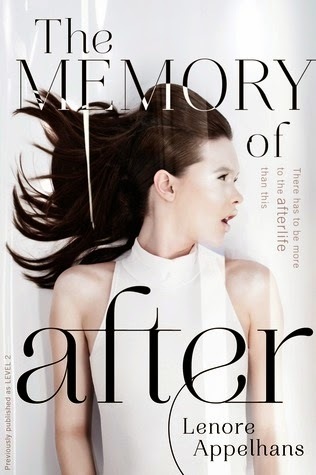
Since her untimely death the day before her eighteenth birthday, Felicia Ward has been trapped in Level 2, a stark white afterlife located between our world and the next. Along with her fellow drones, Felicia passes the endless hours reliving memories of her time on Earth and mourning what she’s lost-family, friends, and Neil, the boy she loved.
Then a girl in a neighboring chamber is found dead, and nobody but Felicia recalls that she existed in the first place. When Julian-a dangerously charming guy Felicia knew in life-comes to offer Felicia a way out, Felicia learns the truth: If she joins the rebellion to overthrow the Morati, the angel guardians of Level 2, she can be with Neil again. -- Description via Goodreads
This giveaway is open to US and Canadian residents only, since I'll be shipping them myself. But there are 6 copies available, meaning 6 winners total. You have until August 15 to enter, and I'll pull and contact all of the lucky folks then.
Click here to enter.






 Related Stories"It Happens" GiveawayIt Happens: A GiveawayGiveaway: THE FEVER by Megan Abbott
Related Stories"It Happens" GiveawayIt Happens: A GiveawayGiveaway: THE FEVER by Megan Abbott
Up for grabs are 6 paperback copies of Lenore Appelhans's The Memory of After, which you may remember was titled Level 2 in hardcover. The sequel, Chasing Before, is out later this month. I got the chance to read a very early draft of the sequel and liked it even more than I liked The Memory of After. You can read my thoughts on the book here.

Since her untimely death the day before her eighteenth birthday, Felicia Ward has been trapped in Level 2, a stark white afterlife located between our world and the next. Along with her fellow drones, Felicia passes the endless hours reliving memories of her time on Earth and mourning what she’s lost-family, friends, and Neil, the boy she loved.
Then a girl in a neighboring chamber is found dead, and nobody but Felicia recalls that she existed in the first place. When Julian-a dangerously charming guy Felicia knew in life-comes to offer Felicia a way out, Felicia learns the truth: If she joins the rebellion to overthrow the Morati, the angel guardians of Level 2, she can be with Neil again. -- Description via Goodreads
This giveaway is open to US and Canadian residents only, since I'll be shipping them myself. But there are 6 copies available, meaning 6 winners total. You have until August 15 to enter, and I'll pull and contact all of the lucky folks then.
Click here to enter.







 Related Stories"It Happens" GiveawayIt Happens: A GiveawayGiveaway: THE FEVER by Megan Abbott
Related Stories"It Happens" GiveawayIt Happens: A GiveawayGiveaway: THE FEVER by Megan Abbott
Published on August 02, 2014 22:00
July 31, 2014
This Week at Book Riot
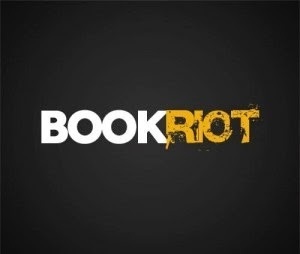
Here's a look at what I wrote this week over at Book Riot:
I rounded up three recent film trailers for YA adaptations, including The Maze Runner, Mockingjay, and If I Stay.
For 3 on a YA Theme I talked about an interesting trend of nail polish lines being created around YA dystopians that have (or are) hitting the big screen. The comments gave some insight into the nail polish side of it, too, though less insight into the why dystopian YA specifically. I also shared my favorite book of July in the big monthly round-up.







 Related StoriesAt Book Riot This Week (& Changes at Stacked)Recently at Book RiotAn Interview with Laurie Halse Anderson at Book Riot
Related StoriesAt Book Riot This Week (& Changes at Stacked)Recently at Book RiotAn Interview with Laurie Halse Anderson at Book Riot
Published on July 31, 2014 22:00
July 30, 2014
Edelweiss 101: A Guide for New Users
I'm a huge fan of Edelweiss. I've talked it up at a couple of library conferences, telling attendees that it's a one-stop shop for learning all about the books coming out that they should have on their radars. I used it regularly not only for features here at Stacked, but it's where I acquire some of my digital review copies of forthcoming titles.
Something I regularly hear, though, is that Edelweiss is not easy to use and for those who haven't been playing with it for a while, it can be extremely difficult to navigate. It's not intuitive. So I thought because it's a tool I find so useful and valuable not only in blogging but in librarianship, I'd offer up a quick and dirty how-to to Edelweiss. This is geared toward US librarians, educators, and bloggers who aren't otherwise familiar with the site and its interface, and I know for sure I'll miss some key or valuable features. Things might vary depending on what country you're in, which is why I note it's geared toward those in the US (I think most things should be the same if you're in Canada, but I can't tell you for certain). This is meant to be a beginner's guide, and it's meant to help make some of those really frustrating elements of the site easier to work through.
What IS Edelweiss?
First, if you haven't used it or have only heard of it in passing, you might not even know what Edelweiss is or where to find it.
Edelweiss is a one-stop shop for publishers to share their seasonal catalogs. It's not comprehensive, as it's opt-in by the publishers. But it offers the biggest place to peruse numerous catalogs; it saves you from having to track down each publisher's website then navigate their websites to find their most recent catalog. Many publishers not only have the current season up, but they have loads of former seasons still available and many of them will share specialty catalogs as well. Scholastic, for example, will offer not only the Fall 2014 catalog, but they'll also have a catalog of titles they spoke specifically about during one of their educator/librarian webinars, making it easy to see only the books that were talked about.

That's the front page of Edelweiss when you're not logged in with your own account. It's got the publishers listed on the left-hand sidebar, and down the center are the most recently added catalogs. Even if you're not logged in, you should be able to access many -- if not all -- of the catalogs when you click on a publisher's name. I'm logged out, and I clicked on the ABRAMS catalog:

All of their listings are along the left-hand sidebar, and down the center are the most recent catalogs they've added to Edelweiss.

When you pick a catalog to view -- I chose the Spring 2014 Children's catalog -- this is what the screen will look like. There are 79 entries for this particular catalog, but the entries include all sorts of products that ABRAMS made available this spring. The top entry, for The Night Gardener, is for that specific book and you can see all kinds of information about it, including the ISBN, publication date, page count, what the first print run will be, the cover, and so forth. Not all publishers furnish all of this information; it's entirely dependent upon the publisher. The second entry for this catalog is for the 12-copy floor display of the same book. This is meant for book sellers, rather than for librarians or educators, so it might not be super useful information.
Digging Deeper Into Catalog Entries
I'm still logged out of Edelweiss, but even logged out, there's a ton of information that can be pulled from the individual catalog entries. Using the same ABRAMS Spring 2014 Children's catalog from above, I went and clicked on the title The Night Gardner.


Where looking at the entire catalog as a list gives you some basics about upcoming titles, clicking on the individual entries will give you far more in-depth information. This particular title doesn't have as much information in it as others do, but it gives you a summary, a biography of the author, and it lists the first book in the series as a comparable title. You can also see the reviews that the book's garnered, as well as blurbs that might have been given for the title.
The information presented varies depending upon the book and depending upon the publisher. Some offer far more information and some offer even less. Here's a title that gives a ton of great information about the book:



The entry for Melissa Marr's Made for You, out in September, has a really filled-out entry. You not only have the basics, but you also have the marketing plan laid out on the right-hand side. For a general reader or blogger, this might not be interesting. But what it can be valuable for -- what I've told people to use it for -- is to see where the book, or other books, might pop up. You might see website names that there will be promotions pitched to and that can be useful for sussing out where people are learning about books more broadly (and it lets you stay ahead of the curve on those things). Made for You doesn't list any specific sites except for Epic Reads, which is Harper's promotional site, but it does tell you that there will be some significant marketing for this title, suggesting teen and non-teen readers will likely see something for this book, especially around Halloween. The 150K first printing, which you can see in the top box, tells you it's one of the lead titles in the Fall.
The comp titles for this entry are all Marr's previous titles. This isn't particularly useful when you know the author's other works, but it can be useful to know it's going to be fairly similar to her prior books and it can be useful to know in the event you've missed an older title.
There are some publishers which offer really great comp titles in their entries that can be extremely useful for figuring out what a book might be about or who that book might appeal to.

For Brenna Yovanoff's Fiendish, the comp titles are really great. You not only get a look at her own titles, but you also see that Fiendish is comparable to Kendare Blake's books, Tom McNeal's, Jonathan Maberry's, and Holly Black's. They're not meant to be read alikes, but rather, they're meant to sort of situate the book within a genre or a style. Sometimes they work as read alikes, but that's not the purpose of comps.
Limitations of Using Edelweiss Without an Account
While you can pull a lot of information out of Edelweiss without an account, you're also limited in what you can do. For one thing, there's not a good search interface. You can't, from the front page, look up books well. Even within catalog, it's not easy to search through titles. So if you wanted to pull up information for a book, you'd have to dig around for it.
If you're not logged into Edelweiss, you also have no access to digital ARCs, either. You have no idea whether a title is available for request because the buttons just don't exist at all.
You don't have the capability of looking up buzzing titles. In fact, the way the home page of Edelweiss looks when you're logged in as opposed to using outside your account is substantially different. This is my homepage while logged in:

I'm able to pick up where I may have last been looking (the center column tells me the last catalogs I looked at), and I'm able to simple do and peruse a lot more.
Signing Up for Edelweiss
It's easy to sign up for Edelweiss and have access to a lot more information. Signing up does not guarantee you anything -- you might never be given access to digital ARCs, for example, which I'll get to in a minute -- but you will be able to do more advanced searching and other things.
To sign up for an account, click on "Register" in the top right-hand corner. The form looks like this:


Fill this out as best you can, with as much information as possible. Include all relevant URLs and be as specific as possible about what your role within an organization is. If you're a blogger and a librarian, I'd put librarian down as your key role, followed by your blogging information under the "User Profile Information."
You'll get a confirmation email minutes after you agree to the terms, and then you can log in to the site. Now your screen looks different and you can see so much more.
Digital Review Copies
The biggest advantage for logging in at this point is probably digital ARC access. But just because you have access doesn't mean that publishers are going to grant you copies. There are limits in distribution and choices aren't always clear-cut. Sometimes, you'll find you have access without having to ask for a book, and other times, you'll see that there isn't even a button to request a digital ARC. Still other times, you'll request a title and wait for a couple of weeks before you find out whether your request was accepted or rejected.
When you're perusing a catalog and logged in, oftentimes, you'll see a button that there's a digital copy available right in the catalog itself.

I can request this particular digital ARC right from the catalog Fall 2014 Penguin Children's catalog. When I click on the "Request" button, this is the box that pops up:

The first time you request a title, you'll be asked to describe your role. This is going to stay attached to your requests every time you put one in, unless you choose to edit them each and every time. Be specific in your role -- mine says I'm a YA librarian, as well as a book blogger. I listed where I blog, since that tells the person going through all of the requests exactly where I'm writing, rather than just saying that I have a blog. It's one way to differentiate yourself and it's giving a better idea of who you are. You can include stats or any other information, but I choose not to furnish that information because it's not something I pass along for free.
That second box, where you can give a specific reason for your request, is really important. This is a box I make sure I fill out each time I request. In it, I reiterate I'm a blogger and where, and I note that I'm requesting it for potential coverage at either site. I don't promise a review or any response; I note that there's the potential for it.
I request very few digital ARCs, so I don't feel bad about saying that by requesting, I may not cover it. In many cases, I've also used this box to express an interest in a particular digital ARC because I've read the author's prior work or I saw it in a promotion somewhere and it piqued my interest. Fill this out each and every time to increase your chances of having your request approved. Even if it doesn't grant you a specific ARC at times, it's important for you to do because it reminds you why you're interested. It's a reminder of the role YOU play.
There's no timeline for when requests are approved or denied. It can be hours, it can be days, it can be weeks. Those will come through the email you gave Edelweiss when you signed up. But if you happen to miss the communication, there is a way to check out it.
Discovering available digital ARCs isn't limited to catalog perusal. There's an entire tab on the Edelweiss website devoted to ARCs and to ARC organization. You're able to search it, narrow down your interests, and you're able to submit reviews or other information as you choose.
When you go back to the Edelweiss homepage, click on the "Review Copies" tab and this is what you'll see:

Along the left-hand sidebar, you can narrow down your search through the available digital ARCs by age category, subject, publisher imprint, publication date, or publisher. When I pulled up this screen, I had 3,370 digital ARCs I could peruse, so narrowing down to exactly what interests me would be helpful. If there's a specific title I'm interested in, the search box right above the first available title is useful.
When you look at the right-hand side of this screen, you can see that above the "Request Digital RC" there's a note that lists when the title was added. This is useful if you check back every few days. You'll know exactly what's new. You can also see there are two different colored buttons on my screen: the blue one notes I can request the ARC and the green one, for the title below, means I can just download it. I'm "white listed" for Random House Children's titles, meaning anything they put up is available for me to download without asking. Different publishers have different rules for who and how they choose people to put on their white list. I know some, like Macmillan, let librarians on their white lists and tell you how to go about it.
The next little tab to know about within the Review Copies tab is where those ARCs are held and where you can check the status of titles you've requested.

You can see I clicked over to the "Requests" tab which is on the second row of tabs that stretch across the top of the screen. In there, I can see the status of everything I've requested. The top title, The Walled City, I haven't yet heard back about, which is why it's a blue question mark under "status." I sent the request about a week ago. Beside the status, you can see when the title is downloadable until and when I downloaded it. (And funny, as soon as I began writing this section of the post, I got an email saying I'd been approved for this title).
The second two titles you can see were both approved and had both been downloaded. If I had an issue with either of them, the little blue "Message" link beneath them would allow me to be in touch with someone about those issues.
The bottom title, A Time to Dance, shows that I was approved, but that it expired and I never downloaded it. This happens -- I think this particular title is one I requested close to when it would expire, and since I use a Nook to read and downloading/transferring can be cumbersome, I didn't act on it fast enough. It's not the end of the world, but I do dislike seeing that I never downloaded it when I'd been able to.
You'll be emailed when your request has been answered, but if you miss it, this is where you can check that status. Do read those emails, though, since they can tell you some of what the publisher wants from you. Though you don't have to comply if the request isn't reasonable -- if they expect a review, for example -- some publishers kindly ask you to hold off on posting reviews until it's near publication date. That kind of stuff I do keep in mind when reviewing, especially if it's for a book I really enjoyed.
There's a second tab beside the Request tab worth knowing about, too. Though it looks like it has the same information, the Downloads tab is where you'll input reviews of titles you've requested if you want to do that. Many people think you have to write or share a review for each title you request, and I think it's courtesy to do that, but I'm not very good at it. I think part of why is because I read a lot and review them in other venues -- Stacked or on Goodreads -- though it'd be just as easy for me to copy those reviews and put them into Edelweiss.

Here's a look at the titles I've requested and downloaded in the last 4 months (I can change the view to look at books within the last 2 days or up to the last year or more) and on the right-hand column, I can put in my review. As you can see, too, I do my requests/downloads in batches. I should probably get better about doing that with reviews. It's not the end of the world if you don't include a review, but it's probably a good idea to do that if you aren't reviewing in other places. Here's what the review screen looks like. Note that your profile from where you request review copies carries over into the review form, too:

You can leave a recommendation for the book with your level of enthusiasm, and you're also able to leave a text review. On the bottom right-hand side, you can see that you have options for who can see the review. The little blue "i" boxes will tell you what IndieNext and LibraryReads are, so if you're able to submit to either of those, feel free to do so. Edelweiss is a professional tool used by professionals, so if you're a librarian and the title fits the LibraryNext criteria, then go for it.
Those reviews you enter into Edelweiss can be seen in the catalog if a publisher so chooses. I hopped up to the search bar on the top of the screen -- the one that looks at All Titles, as opposed to just the review titles search -- and put in 100 Sideways Miles by Andrew Smith to get back to the main catalog entry for it, which looks like this:

The entry notes that there is 1 featured peer review and that it has received "much love" from 11 peers. 11 people were enthusiastic enough to give this a "much love" rating in their review box, and one person wrote and submitted a text review that then the publisher allowed other users to read:

I think of those text reviews like Amazon or Barnes & Noble reviews. They're as useful as you allow them to be when you write them, and they're as useful to you as you allow them to be when you read them. They're going to be better since this is an industry tool, as opposed to a consumer tool, so if you like reading reviews, digging through these when you're looking at titles might not be a bad thing.
There is another way to read through reviews, too, but it's a little more involved. Edelweiss has ways for you to make the site social in a GoodReads sort of way. I don't use it this way, so I can't show a good example, but up on the main bar of tabs at the top of the screen, there's a tab for Reviews:

If you use the social aspects of Edelweiss and have friends on the site, you're able to see what reviews they've submitted within any give time frame. You can also filter it down by which friend reviews you want to look through. For me, this isn't particularly useful, but I can see it being an interesting thing to toy with if you're at a school or a library with multiple people reading and reviewing titles.
Buzz
Another basic feature worth hitting in Edelweiss is the "Buzz" tab. You can find that up on the top bar, where you found the "Review Copies" tab. This digs through the catalogs and pulls out entries that fall within a variety of different awards.

Say you want to know what books were on the recent LibraryReads list but can't remember or you want to read through their descriptions. You can find them all here under this tab. The future pub titles are for the most recent list -- the August LibraryReads list -- and the recent pub titles are ones from the last four months. The backlist are from prior seasonal catalogs (and remember in the publishing world that backlist is 6 months old, so those would include titles that were published this year).
Though there's not a whole lot here for those interested in children's or YA titles, I still find it's useful to look through periodically because it tells me what books are being talked about in other arenas. I may not be reading them, but other people are, and knowing that is useful to me.
Interestingly, if you were to see the rest of this page of buzzed titles, you'd see that Texas's state awards titles are included, as are starred reviews from Publishers Weekly. I'm not sure I know how the lists got included here or what the criteria are for being included, but they're worth a look.
Using Search
The final basic thing worth knowing about Edelweiss is their advanced search feature. It's imperfect and misses a lot of things I know I catch when I read the individual entries, but it is a great starting point when you have a question or want to try to remember something you thought you saw.

On the second row of tabs across the top of the main screen page, there's a tab for "Advanced Search." When you click on it, you're taken to a screen where you can search through a ton of different elements within the catalog entries. Again, since publishers include different information in different parts of their entries, this is going to be imperfect searching.
I find using the "summaries" and "keynotes" boxes the most useful for seeking out what I'm looking for. So, for example, I think I've seen a few books that have been compared to Looking for Alaska recently. But I want to know what some of them might be. I can do that from here by going to the "summaries" box and doing a search for Looking for Alaska and changing my delimiter to "containing the exact phrase." I could limit my search to specific catalog seasons (which is useful if you're looking for books about a certain topic coming out in the fall) or to specific publishers (like I did in a prior microtrends post, I did for books featuring girls named "Lucy" -- I kept it to the publishers I knew did YA). In this case, I'm not going to limit though, since I limited by search to the exact phrase "Looking for Alaska."

This is what that search looks like when you run it. Note that if you're looking for something big, the search can take a long time and can sometimes bring you tons of unnecessary results. This one is pretty straightforward and limited, though:
When I get the results for this search, I get 28 entries. Among them are the various editions and sales models for Looking for Alaska and books which were reviewed by Green. A couple of titles pop up that include the words "looking" and "Alaska" in their summaries, too, even though they're not being compared. But out of 28 titles, I can browse and see that a few have been compared to the book in their summaries:

Indeed, there's at least one forthcoming book with that in the description.
I looked through the rest of the entries I got for this search and they confirmed that a few titles in the past have been compared to Looking for Alaska. I'm not sure why this is the case, but it doesn't capture all of the titles I know have that comparison. The advanced search, as I noted, is imperfect, but it's a really good starting place. If I wanted to find more comps, I'd go back and revise my search to look in the keynotes, too, as it might help me pull up some of the other titles I know have that comparison drawn (one off the top of my head which didn't appear in any search combination I did is Chelsey Philpot's Even in Paradise, despite the fact the exact phrase Looking for Alaska is right there in the summary).
To Wrap Up
While the interface is imperfect and there are things which aren't intuitive, Edelweiss is a great tool for professional readers or those who teach or work in libraries. It takes experimentation and everyone will find different aspects of it suit their needs and their interests. I've laid out the basics here, and from those starting points, I'm able to pull out the information I am looking for or thinking about. I use Edelweiss to put together previews and to talk about book covers and trends. Since these are the catalogs from the publishers, I trust them more than I trust pulling images from a retail site (those aren't always accurate, as the wrong cover may have been submitted).
Feel free to ask questions if you have any and I can try my best to answer. Edelweiss does have a pretty good help page, which has a lot of other tips and tricks to help you navigate and use the site in the best way possible. Edelweiss is what you make of it, and once you have the basics down, you'll find that you'll use it more than you thought you would.
If you know any other tips or tricks I should know about, I'd love to know those, too.







Something I regularly hear, though, is that Edelweiss is not easy to use and for those who haven't been playing with it for a while, it can be extremely difficult to navigate. It's not intuitive. So I thought because it's a tool I find so useful and valuable not only in blogging but in librarianship, I'd offer up a quick and dirty how-to to Edelweiss. This is geared toward US librarians, educators, and bloggers who aren't otherwise familiar with the site and its interface, and I know for sure I'll miss some key or valuable features. Things might vary depending on what country you're in, which is why I note it's geared toward those in the US (I think most things should be the same if you're in Canada, but I can't tell you for certain). This is meant to be a beginner's guide, and it's meant to help make some of those really frustrating elements of the site easier to work through.
What IS Edelweiss?
First, if you haven't used it or have only heard of it in passing, you might not even know what Edelweiss is or where to find it.
Edelweiss is a one-stop shop for publishers to share their seasonal catalogs. It's not comprehensive, as it's opt-in by the publishers. But it offers the biggest place to peruse numerous catalogs; it saves you from having to track down each publisher's website then navigate their websites to find their most recent catalog. Many publishers not only have the current season up, but they have loads of former seasons still available and many of them will share specialty catalogs as well. Scholastic, for example, will offer not only the Fall 2014 catalog, but they'll also have a catalog of titles they spoke specifically about during one of their educator/librarian webinars, making it easy to see only the books that were talked about.

That's the front page of Edelweiss when you're not logged in with your own account. It's got the publishers listed on the left-hand sidebar, and down the center are the most recently added catalogs. Even if you're not logged in, you should be able to access many -- if not all -- of the catalogs when you click on a publisher's name. I'm logged out, and I clicked on the ABRAMS catalog:

All of their listings are along the left-hand sidebar, and down the center are the most recent catalogs they've added to Edelweiss.

When you pick a catalog to view -- I chose the Spring 2014 Children's catalog -- this is what the screen will look like. There are 79 entries for this particular catalog, but the entries include all sorts of products that ABRAMS made available this spring. The top entry, for The Night Gardener, is for that specific book and you can see all kinds of information about it, including the ISBN, publication date, page count, what the first print run will be, the cover, and so forth. Not all publishers furnish all of this information; it's entirely dependent upon the publisher. The second entry for this catalog is for the 12-copy floor display of the same book. This is meant for book sellers, rather than for librarians or educators, so it might not be super useful information.
Digging Deeper Into Catalog Entries
I'm still logged out of Edelweiss, but even logged out, there's a ton of information that can be pulled from the individual catalog entries. Using the same ABRAMS Spring 2014 Children's catalog from above, I went and clicked on the title The Night Gardner.


Where looking at the entire catalog as a list gives you some basics about upcoming titles, clicking on the individual entries will give you far more in-depth information. This particular title doesn't have as much information in it as others do, but it gives you a summary, a biography of the author, and it lists the first book in the series as a comparable title. You can also see the reviews that the book's garnered, as well as blurbs that might have been given for the title.
The information presented varies depending upon the book and depending upon the publisher. Some offer far more information and some offer even less. Here's a title that gives a ton of great information about the book:



The entry for Melissa Marr's Made for You, out in September, has a really filled-out entry. You not only have the basics, but you also have the marketing plan laid out on the right-hand side. For a general reader or blogger, this might not be interesting. But what it can be valuable for -- what I've told people to use it for -- is to see where the book, or other books, might pop up. You might see website names that there will be promotions pitched to and that can be useful for sussing out where people are learning about books more broadly (and it lets you stay ahead of the curve on those things). Made for You doesn't list any specific sites except for Epic Reads, which is Harper's promotional site, but it does tell you that there will be some significant marketing for this title, suggesting teen and non-teen readers will likely see something for this book, especially around Halloween. The 150K first printing, which you can see in the top box, tells you it's one of the lead titles in the Fall.
The comp titles for this entry are all Marr's previous titles. This isn't particularly useful when you know the author's other works, but it can be useful to know it's going to be fairly similar to her prior books and it can be useful to know in the event you've missed an older title.
There are some publishers which offer really great comp titles in their entries that can be extremely useful for figuring out what a book might be about or who that book might appeal to.

For Brenna Yovanoff's Fiendish, the comp titles are really great. You not only get a look at her own titles, but you also see that Fiendish is comparable to Kendare Blake's books, Tom McNeal's, Jonathan Maberry's, and Holly Black's. They're not meant to be read alikes, but rather, they're meant to sort of situate the book within a genre or a style. Sometimes they work as read alikes, but that's not the purpose of comps.
Limitations of Using Edelweiss Without an Account
While you can pull a lot of information out of Edelweiss without an account, you're also limited in what you can do. For one thing, there's not a good search interface. You can't, from the front page, look up books well. Even within catalog, it's not easy to search through titles. So if you wanted to pull up information for a book, you'd have to dig around for it.
If you're not logged into Edelweiss, you also have no access to digital ARCs, either. You have no idea whether a title is available for request because the buttons just don't exist at all.
You don't have the capability of looking up buzzing titles. In fact, the way the home page of Edelweiss looks when you're logged in as opposed to using outside your account is substantially different. This is my homepage while logged in:

I'm able to pick up where I may have last been looking (the center column tells me the last catalogs I looked at), and I'm able to simple do and peruse a lot more.
Signing Up for Edelweiss
It's easy to sign up for Edelweiss and have access to a lot more information. Signing up does not guarantee you anything -- you might never be given access to digital ARCs, for example, which I'll get to in a minute -- but you will be able to do more advanced searching and other things.
To sign up for an account, click on "Register" in the top right-hand corner. The form looks like this:


Fill this out as best you can, with as much information as possible. Include all relevant URLs and be as specific as possible about what your role within an organization is. If you're a blogger and a librarian, I'd put librarian down as your key role, followed by your blogging information under the "User Profile Information."
You'll get a confirmation email minutes after you agree to the terms, and then you can log in to the site. Now your screen looks different and you can see so much more.
Digital Review Copies
The biggest advantage for logging in at this point is probably digital ARC access. But just because you have access doesn't mean that publishers are going to grant you copies. There are limits in distribution and choices aren't always clear-cut. Sometimes, you'll find you have access without having to ask for a book, and other times, you'll see that there isn't even a button to request a digital ARC. Still other times, you'll request a title and wait for a couple of weeks before you find out whether your request was accepted or rejected.
When you're perusing a catalog and logged in, oftentimes, you'll see a button that there's a digital copy available right in the catalog itself.

I can request this particular digital ARC right from the catalog Fall 2014 Penguin Children's catalog. When I click on the "Request" button, this is the box that pops up:

The first time you request a title, you'll be asked to describe your role. This is going to stay attached to your requests every time you put one in, unless you choose to edit them each and every time. Be specific in your role -- mine says I'm a YA librarian, as well as a book blogger. I listed where I blog, since that tells the person going through all of the requests exactly where I'm writing, rather than just saying that I have a blog. It's one way to differentiate yourself and it's giving a better idea of who you are. You can include stats or any other information, but I choose not to furnish that information because it's not something I pass along for free.
That second box, where you can give a specific reason for your request, is really important. This is a box I make sure I fill out each time I request. In it, I reiterate I'm a blogger and where, and I note that I'm requesting it for potential coverage at either site. I don't promise a review or any response; I note that there's the potential for it.
I request very few digital ARCs, so I don't feel bad about saying that by requesting, I may not cover it. In many cases, I've also used this box to express an interest in a particular digital ARC because I've read the author's prior work or I saw it in a promotion somewhere and it piqued my interest. Fill this out each and every time to increase your chances of having your request approved. Even if it doesn't grant you a specific ARC at times, it's important for you to do because it reminds you why you're interested. It's a reminder of the role YOU play.
There's no timeline for when requests are approved or denied. It can be hours, it can be days, it can be weeks. Those will come through the email you gave Edelweiss when you signed up. But if you happen to miss the communication, there is a way to check out it.
Discovering available digital ARCs isn't limited to catalog perusal. There's an entire tab on the Edelweiss website devoted to ARCs and to ARC organization. You're able to search it, narrow down your interests, and you're able to submit reviews or other information as you choose.
When you go back to the Edelweiss homepage, click on the "Review Copies" tab and this is what you'll see:

Along the left-hand sidebar, you can narrow down your search through the available digital ARCs by age category, subject, publisher imprint, publication date, or publisher. When I pulled up this screen, I had 3,370 digital ARCs I could peruse, so narrowing down to exactly what interests me would be helpful. If there's a specific title I'm interested in, the search box right above the first available title is useful.
When you look at the right-hand side of this screen, you can see that above the "Request Digital RC" there's a note that lists when the title was added. This is useful if you check back every few days. You'll know exactly what's new. You can also see there are two different colored buttons on my screen: the blue one notes I can request the ARC and the green one, for the title below, means I can just download it. I'm "white listed" for Random House Children's titles, meaning anything they put up is available for me to download without asking. Different publishers have different rules for who and how they choose people to put on their white list. I know some, like Macmillan, let librarians on their white lists and tell you how to go about it.
The next little tab to know about within the Review Copies tab is where those ARCs are held and where you can check the status of titles you've requested.

You can see I clicked over to the "Requests" tab which is on the second row of tabs that stretch across the top of the screen. In there, I can see the status of everything I've requested. The top title, The Walled City, I haven't yet heard back about, which is why it's a blue question mark under "status." I sent the request about a week ago. Beside the status, you can see when the title is downloadable until and when I downloaded it. (And funny, as soon as I began writing this section of the post, I got an email saying I'd been approved for this title).
The second two titles you can see were both approved and had both been downloaded. If I had an issue with either of them, the little blue "Message" link beneath them would allow me to be in touch with someone about those issues.
The bottom title, A Time to Dance, shows that I was approved, but that it expired and I never downloaded it. This happens -- I think this particular title is one I requested close to when it would expire, and since I use a Nook to read and downloading/transferring can be cumbersome, I didn't act on it fast enough. It's not the end of the world, but I do dislike seeing that I never downloaded it when I'd been able to.
You'll be emailed when your request has been answered, but if you miss it, this is where you can check that status. Do read those emails, though, since they can tell you some of what the publisher wants from you. Though you don't have to comply if the request isn't reasonable -- if they expect a review, for example -- some publishers kindly ask you to hold off on posting reviews until it's near publication date. That kind of stuff I do keep in mind when reviewing, especially if it's for a book I really enjoyed.
There's a second tab beside the Request tab worth knowing about, too. Though it looks like it has the same information, the Downloads tab is where you'll input reviews of titles you've requested if you want to do that. Many people think you have to write or share a review for each title you request, and I think it's courtesy to do that, but I'm not very good at it. I think part of why is because I read a lot and review them in other venues -- Stacked or on Goodreads -- though it'd be just as easy for me to copy those reviews and put them into Edelweiss.

Here's a look at the titles I've requested and downloaded in the last 4 months (I can change the view to look at books within the last 2 days or up to the last year or more) and on the right-hand column, I can put in my review. As you can see, too, I do my requests/downloads in batches. I should probably get better about doing that with reviews. It's not the end of the world if you don't include a review, but it's probably a good idea to do that if you aren't reviewing in other places. Here's what the review screen looks like. Note that your profile from where you request review copies carries over into the review form, too:

You can leave a recommendation for the book with your level of enthusiasm, and you're also able to leave a text review. On the bottom right-hand side, you can see that you have options for who can see the review. The little blue "i" boxes will tell you what IndieNext and LibraryReads are, so if you're able to submit to either of those, feel free to do so. Edelweiss is a professional tool used by professionals, so if you're a librarian and the title fits the LibraryNext criteria, then go for it.
Those reviews you enter into Edelweiss can be seen in the catalog if a publisher so chooses. I hopped up to the search bar on the top of the screen -- the one that looks at All Titles, as opposed to just the review titles search -- and put in 100 Sideways Miles by Andrew Smith to get back to the main catalog entry for it, which looks like this:

The entry notes that there is 1 featured peer review and that it has received "much love" from 11 peers. 11 people were enthusiastic enough to give this a "much love" rating in their review box, and one person wrote and submitted a text review that then the publisher allowed other users to read:

I think of those text reviews like Amazon or Barnes & Noble reviews. They're as useful as you allow them to be when you write them, and they're as useful to you as you allow them to be when you read them. They're going to be better since this is an industry tool, as opposed to a consumer tool, so if you like reading reviews, digging through these when you're looking at titles might not be a bad thing.
There is another way to read through reviews, too, but it's a little more involved. Edelweiss has ways for you to make the site social in a GoodReads sort of way. I don't use it this way, so I can't show a good example, but up on the main bar of tabs at the top of the screen, there's a tab for Reviews:

If you use the social aspects of Edelweiss and have friends on the site, you're able to see what reviews they've submitted within any give time frame. You can also filter it down by which friend reviews you want to look through. For me, this isn't particularly useful, but I can see it being an interesting thing to toy with if you're at a school or a library with multiple people reading and reviewing titles.
Buzz
Another basic feature worth hitting in Edelweiss is the "Buzz" tab. You can find that up on the top bar, where you found the "Review Copies" tab. This digs through the catalogs and pulls out entries that fall within a variety of different awards.

Say you want to know what books were on the recent LibraryReads list but can't remember or you want to read through their descriptions. You can find them all here under this tab. The future pub titles are for the most recent list -- the August LibraryReads list -- and the recent pub titles are ones from the last four months. The backlist are from prior seasonal catalogs (and remember in the publishing world that backlist is 6 months old, so those would include titles that were published this year).
Though there's not a whole lot here for those interested in children's or YA titles, I still find it's useful to look through periodically because it tells me what books are being talked about in other arenas. I may not be reading them, but other people are, and knowing that is useful to me.
Interestingly, if you were to see the rest of this page of buzzed titles, you'd see that Texas's state awards titles are included, as are starred reviews from Publishers Weekly. I'm not sure I know how the lists got included here or what the criteria are for being included, but they're worth a look.
Using Search
The final basic thing worth knowing about Edelweiss is their advanced search feature. It's imperfect and misses a lot of things I know I catch when I read the individual entries, but it is a great starting point when you have a question or want to try to remember something you thought you saw.

On the second row of tabs across the top of the main screen page, there's a tab for "Advanced Search." When you click on it, you're taken to a screen where you can search through a ton of different elements within the catalog entries. Again, since publishers include different information in different parts of their entries, this is going to be imperfect searching.
I find using the "summaries" and "keynotes" boxes the most useful for seeking out what I'm looking for. So, for example, I think I've seen a few books that have been compared to Looking for Alaska recently. But I want to know what some of them might be. I can do that from here by going to the "summaries" box and doing a search for Looking for Alaska and changing my delimiter to "containing the exact phrase." I could limit my search to specific catalog seasons (which is useful if you're looking for books about a certain topic coming out in the fall) or to specific publishers (like I did in a prior microtrends post, I did for books featuring girls named "Lucy" -- I kept it to the publishers I knew did YA). In this case, I'm not going to limit though, since I limited by search to the exact phrase "Looking for Alaska."

This is what that search looks like when you run it. Note that if you're looking for something big, the search can take a long time and can sometimes bring you tons of unnecessary results. This one is pretty straightforward and limited, though:
When I get the results for this search, I get 28 entries. Among them are the various editions and sales models for Looking for Alaska and books which were reviewed by Green. A couple of titles pop up that include the words "looking" and "Alaska" in their summaries, too, even though they're not being compared. But out of 28 titles, I can browse and see that a few have been compared to the book in their summaries:

Indeed, there's at least one forthcoming book with that in the description.
I looked through the rest of the entries I got for this search and they confirmed that a few titles in the past have been compared to Looking for Alaska. I'm not sure why this is the case, but it doesn't capture all of the titles I know have that comparison. The advanced search, as I noted, is imperfect, but it's a really good starting place. If I wanted to find more comps, I'd go back and revise my search to look in the keynotes, too, as it might help me pull up some of the other titles I know have that comparison drawn (one off the top of my head which didn't appear in any search combination I did is Chelsey Philpot's Even in Paradise, despite the fact the exact phrase Looking for Alaska is right there in the summary).
To Wrap Up
While the interface is imperfect and there are things which aren't intuitive, Edelweiss is a great tool for professional readers or those who teach or work in libraries. It takes experimentation and everyone will find different aspects of it suit their needs and their interests. I've laid out the basics here, and from those starting points, I'm able to pull out the information I am looking for or thinking about. I use Edelweiss to put together previews and to talk about book covers and trends. Since these are the catalogs from the publishers, I trust them more than I trust pulling images from a retail site (those aren't always accurate, as the wrong cover may have been submitted).
Feel free to ask questions if you have any and I can try my best to answer. Edelweiss does have a pretty good help page, which has a lot of other tips and tricks to help you navigate and use the site in the best way possible. Edelweiss is what you make of it, and once you have the basics down, you'll find that you'll use it more than you thought you would.
If you know any other tips or tricks I should know about, I'd love to know those, too.








Published on July 30, 2014 22:00
July 29, 2014
Audio Review: The Tyrant's Daughter by J. C. Carleson
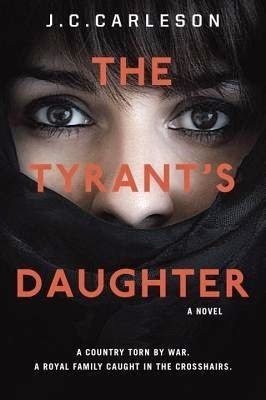 Fifteen year old Laila has always been told that her father is the king of their middle Eastern country. When he's killed in a coup by his own brother, Laila's uncle, she escapes with her family - her mother and younger brother - to America. There, Laila's mother keeps up the pretense that Laila's father was a king, even calling her younger brother a prince. Laila slowly begins to learn the truth: her father was a dictator, a tyrant, a man who kept his power by force.
Fifteen year old Laila has always been told that her father is the king of their middle Eastern country. When he's killed in a coup by his own brother, Laila's uncle, she escapes with her family - her mother and younger brother - to America. There, Laila's mother keeps up the pretense that Laila's father was a king, even calling her younger brother a prince. Laila slowly begins to learn the truth: her father was a dictator, a tyrant, a man who kept his power by force.While Laila struggles to adapt to her new life in America, she also struggles to understand her old life in this new context. Written by a former CIA officer, the book has a strong ring of authenticity. Carleson wisely chose to create a fictional country for her book, but the story is based on an amalgamation of real people and events. Nothing is played for gasps or used to deliberately alarm the reader. Instead, we're given a chance to see the world from Laila's point of view. Her voice is authentically teen, but she provides a very different perspective from most other YA books. It's fascinating and makes for riveting reading.
Carleson's book tackles multiple topics and themes, juggling them all successfully. Laila's story begins as an exploration of her experience as an immigrant, including her assimilation into American culture. A white student fascinated with international students quickly "adopts" her as a friend and initiates her into the school's culture, including how many American girls relate to boys. This portion of the novel is particularly well-done. We see Laila's judgment of her new American acquaintances quite starkly. At one point she tells the listener that the first word that sprang to her mind when she saw her new friend was "whore." There's the flip side to this, too, as Laila experiences the myriad ways in which the other teens judge her.
While Laila is an immigrant, her story is not typical of most immigrants. Her life in her home country was extraordinarily privileged, but it was also sheltered. Laila knew nothing of her father's actions, not even whispers or rumors, really. Her American friends speak openly about it, though, and for the first time Laila has access to the internet where she can look up whatever she likes. And she does. Watching her grapple with her new knowledge adds another layer to the story, complicating it further.
Added to the mix is some international intrigue. An American man stops by their home frequently, and Laila eventually guesses that he's an agent for the CIA. He indicates to Laila that their family is in America due to his kindness, and that her mother must hold up her end of the bargain - namely by giving him intelligence. But Laila's mother has her own motivations, and she only feeds bits and pieces of what's really going on to Laila. This part of the story could easily have become unrealistic, turning a thoughtful, complex novel into a Tom Clancy book for teens. But Carleson doesn't fall into this trap. What she has crafted instead is a multi-layered novel with a realistic role for her teen to play. Laila isn't an action-adventure hero. Instead, she overhears phone calls, draws conclusions, and tries to puzzle out the hidden meaning behind her mother's words.
There are many more aspects of the book I could discuss, such as how Laila interacts with refugees from her own country, or how the novel's women have their own kind of power, or how it's impossible to determine what is right and what is wrong, even after it ends. This is a complex, meaty book. It's got so many parts, all the parts of a complicated life, and it's executed nearly perfectly.
The book is narrated quite well by Meera Simhan, who voices Laila with a light accent, just enough to give her a realistic voice without turning her into a caricature. You can listen to an excerpt here.
The end of the book is devastating. It pulls no punches and provides no easy answers. With this kind of book, there really aren't answers at all, much less easy ones. Because the ending is open-ended, it also makes Laila's story seem a bit more real. An author's note and a some commentary by Dr. Cheryl Benard, a RAND researcher, are must-reads. They provide more context for Laila's story and also give real-world examples of young people in similar situations and what their ultimate fates were. Fascinating, timely, discussable, and highly recommended.
Audiobook provided by the publisher. The Tyrant's Daughter is available now.







 Related StoriesIllusive by Emily Lloyd-JonesConversion by Katherine HoweHacking, Gaming & Virtual Reality
Related StoriesIllusive by Emily Lloyd-JonesConversion by Katherine HoweHacking, Gaming & Virtual Reality
Published on July 29, 2014 22:00
July 28, 2014
Hacking, Gaming & Virtual Reality
I've noticed a bit of an uptick in YA books featuring virtual reality recently. The concept is certainly not new; ever since the idea of virtual reality has existed, writers have been speculating upon how it could go terribly, horribly wrong. In 1991, a year which pre-dates my own teenage years (also a time before most Americans had internet), Monica Hughes wrote Invitation to the Game, a dystopia about a group of teens who are coerced by the government into playing a supposedly innocuous virtual reality "game" that's revealed to have nefarious purposes. Hughes' book is certainly not the first to tackle this topic, nor are books the only medium. I remember an episode of Who's Afraid of the Dark about a group of kids who got caught in a sort of virtual reality game, playing the same level over and over again, never able to escape. It also seems like most long-running science fiction tv shows will have a token virtual reality episode (I'm thinking specifically of a Stargate SG-1 episode called Gamekeeper, but I know I've seen similar episodes in other shows).
Virtual reality is tied up very closely with gaming in general. Both gaming and virtual reality deliberately blur the line between reality and fantasy, and books that focus on these topics force us to see how one can bleed into the other. Are we different people when we're plugged in? How much control can we cede to a game - to a computer - before we cease to be ourselves? In some cases, can the game be preferable to our real lives - can the game be our real lives?
As technology becomes even more integrated into our daily tasks, this is a topic we return to over and over again. M. T. Anderson wrote his modern classic Feed in 2002, before smartphones had conquered teen communication. Recently, Lauren Miller's Free to Fall explored how an app can consume our lives, dictating all of our decisions if we let it - and even when we try not to let it. These kinds of stories exist both as entertainment and as cautionary tales, a bit of irony in itself.
This booklist features titles that involve gaming or virtual reality in some way. I've also thrown in a few books about hacking, since there seems to be a lot of crossover, particularly in theme (think The Matrix movies, which depict a world where our brains are hacked by the machines we created, keeping us in a permanent virtual reality). All descriptions are from Worldcat (aside from the last one, which is Goodreads). Which recent titles have I missed?
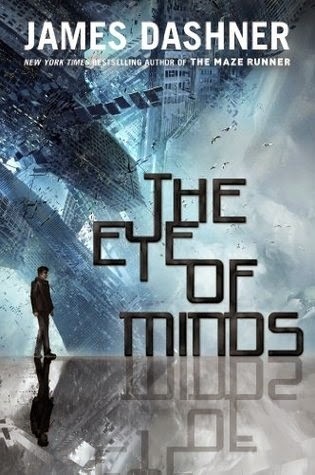
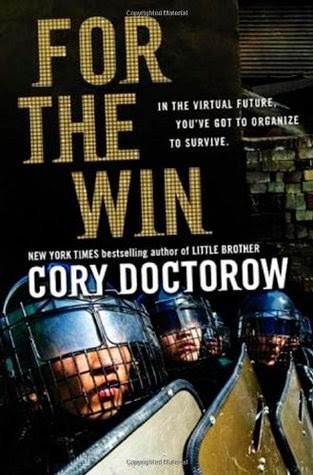
Eye of Minds by James Dashner
Michael is a skilled internet gamer in a world of advanced technology. When a cyber-terrorist begins to threaten players, Michael is called upon to seek him and his secrets out. (The Worldcat synopsis doesn't mention it, but the advanced technology referred to is a large-scale virtual reality world called the VirtNet that consumes most people's lives.)
For the Win by Cory Doctorow
A group of teens from around the world find themselves drawn into an online revolution arranged by a mysterious young woman known as Big Sister Nor, who hopes to challenge the status quo and change the world using her virtual connections.
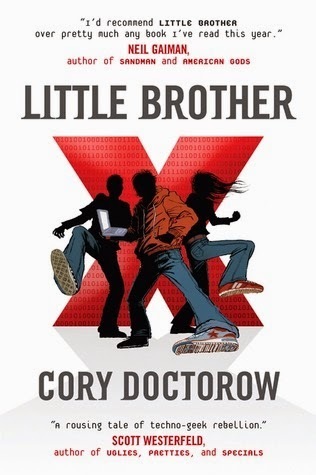
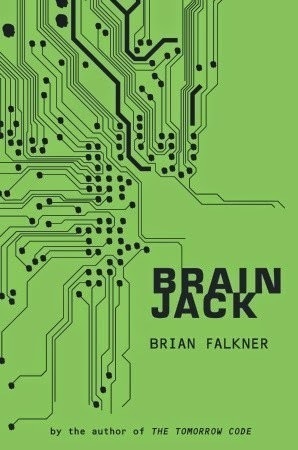
Little Brother by Cory Doctorow
After being interrogated for days by the Department of Homeland Security in the aftermath of a major terrorist attack on San Francisco, California, seventeen-year-old Marcus, released into what is now a police state, decides to use his expertise in computer hacking to set things right. | Sequel: Homeland
Brain Jack by Brian Falkner
In a near-future New York City, fourteen-year-old computer genius Sam Wilson manages to hack into the AT&T network and sets off a chain of events that have a profound effect on human activity throughout the world.
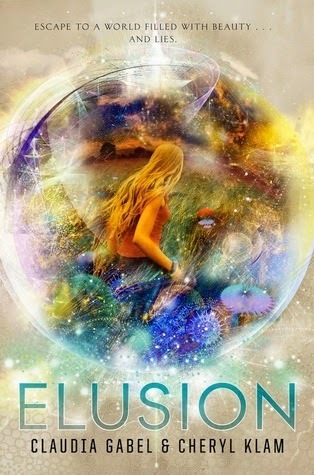
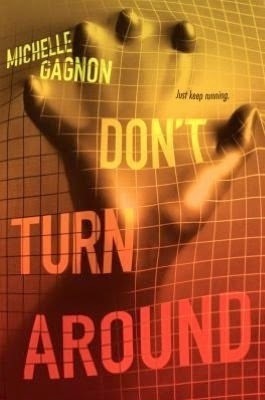
Elusion by Claudia Gabel & Cheryl Klam
Teens uncover the dangerous secrets of a virtual reality program that's taking the country by storm. | Sequel: Etherworld
Don't Turn Around by Michelle Gagnon
After waking up on an operating table with no memory of how she got there, Noa must team up with computer hacker Peter to stop a corrupt corporation with a deadly secret. | Sequels: Don't Look Now, Don't Let Go | Kimberly's review
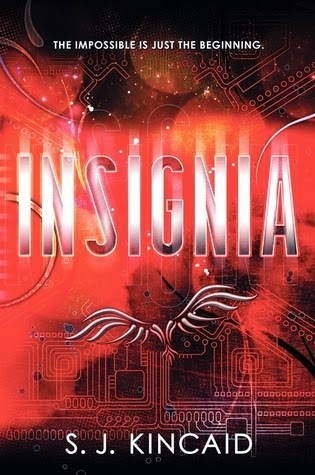
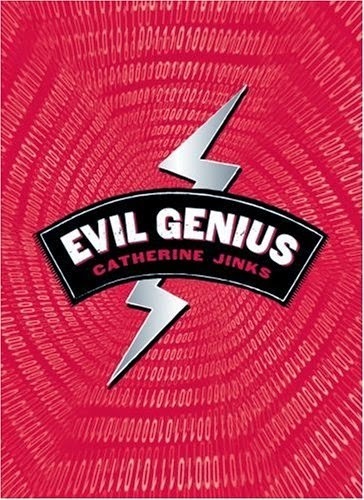
Evil Genius by Catherine Jinks
Child prodigy Cadel Piggot, an antisocial computer hacker, discovers his true identity when he enrolls as a first-year student at an advanced crime academy. (This also fits in well with the teenage criminals booklist.) | Sequels: Genius Squad, The Genius Wars
Insignia by S. J. Kincaid
Tom, a fourteen-year-old genius at virtual reality games, is recruited by the United States Military to begin training at the Pentagon Spire as a Combatant in World War III, controlling the mechanized drones that do the actual fighting off-planet. | Sequels: Vortex, Catalyst | Kimberly's review
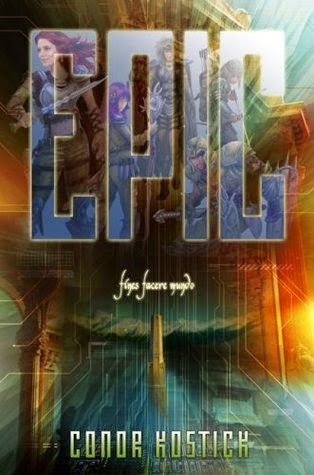
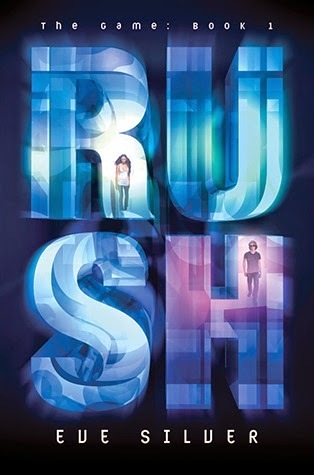
Epic by Conor Kostick
On New Earth, a world based on a video role-playing game, fourteen-year-old Erik persuades his friends to aid him in some unusual gambits in order to save Erik's father from exile and safeguard the futures of each of their families. | Sequels: Saga, Edda
Rush by Eve Silver
Rochester, New York, high schooler Miki Jones is pulled into a sort of a game in which she and other teens battle real-life aliens and the consequences of each battle could be deadly. | Sequels: Push, Crash
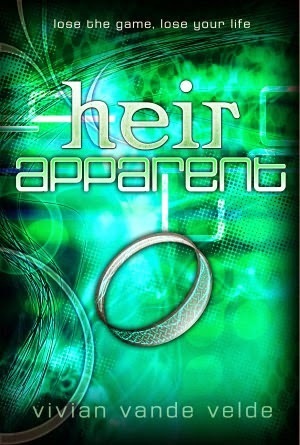
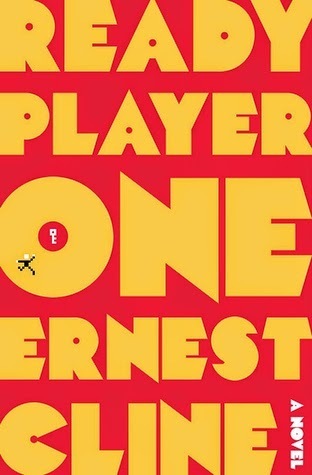
Heir Apparent by Vivian Vande Velde (2002)
While playing a total immersion virtual reality game of kings and intrigue, fourteen-year-old Giannine learns that demonstrators have damaged the equipment to which she is connected, and she must win the game quickly or be damaged herself.
Honorable Mention Adult Crossover: Ready Player One by Ernest Cline
It's the year 2044, and the real world is an ugly place. Like most of humanity, Wade Watts escapes his grim surroundings by spending his waking hours jacked into the OASIS, a sprawling virtual utopia that lets you be anything you want to be, a place where you can live and play and fall in love on any of ten thousand planets.







 Related StoriesCensorship, Challenges, and Other Forms of Protest: A Reading ListTeenage CriminalsThe Shadow Hero by Gene Luen Yang & Sonny Liew
Related StoriesCensorship, Challenges, and Other Forms of Protest: A Reading ListTeenage CriminalsThe Shadow Hero by Gene Luen Yang & Sonny Liew
Virtual reality is tied up very closely with gaming in general. Both gaming and virtual reality deliberately blur the line between reality and fantasy, and books that focus on these topics force us to see how one can bleed into the other. Are we different people when we're plugged in? How much control can we cede to a game - to a computer - before we cease to be ourselves? In some cases, can the game be preferable to our real lives - can the game be our real lives?
As technology becomes even more integrated into our daily tasks, this is a topic we return to over and over again. M. T. Anderson wrote his modern classic Feed in 2002, before smartphones had conquered teen communication. Recently, Lauren Miller's Free to Fall explored how an app can consume our lives, dictating all of our decisions if we let it - and even when we try not to let it. These kinds of stories exist both as entertainment and as cautionary tales, a bit of irony in itself.
This booklist features titles that involve gaming or virtual reality in some way. I've also thrown in a few books about hacking, since there seems to be a lot of crossover, particularly in theme (think The Matrix movies, which depict a world where our brains are hacked by the machines we created, keeping us in a permanent virtual reality). All descriptions are from Worldcat (aside from the last one, which is Goodreads). Which recent titles have I missed?


Eye of Minds by James Dashner
Michael is a skilled internet gamer in a world of advanced technology. When a cyber-terrorist begins to threaten players, Michael is called upon to seek him and his secrets out. (The Worldcat synopsis doesn't mention it, but the advanced technology referred to is a large-scale virtual reality world called the VirtNet that consumes most people's lives.)
For the Win by Cory Doctorow
A group of teens from around the world find themselves drawn into an online revolution arranged by a mysterious young woman known as Big Sister Nor, who hopes to challenge the status quo and change the world using her virtual connections.


Little Brother by Cory Doctorow
After being interrogated for days by the Department of Homeland Security in the aftermath of a major terrorist attack on San Francisco, California, seventeen-year-old Marcus, released into what is now a police state, decides to use his expertise in computer hacking to set things right. | Sequel: Homeland
Brain Jack by Brian Falkner
In a near-future New York City, fourteen-year-old computer genius Sam Wilson manages to hack into the AT&T network and sets off a chain of events that have a profound effect on human activity throughout the world.


Elusion by Claudia Gabel & Cheryl Klam
Teens uncover the dangerous secrets of a virtual reality program that's taking the country by storm. | Sequel: Etherworld
Don't Turn Around by Michelle Gagnon
After waking up on an operating table with no memory of how she got there, Noa must team up with computer hacker Peter to stop a corrupt corporation with a deadly secret. | Sequels: Don't Look Now, Don't Let Go | Kimberly's review


Evil Genius by Catherine Jinks
Child prodigy Cadel Piggot, an antisocial computer hacker, discovers his true identity when he enrolls as a first-year student at an advanced crime academy. (This also fits in well with the teenage criminals booklist.) | Sequels: Genius Squad, The Genius Wars
Insignia by S. J. Kincaid
Tom, a fourteen-year-old genius at virtual reality games, is recruited by the United States Military to begin training at the Pentagon Spire as a Combatant in World War III, controlling the mechanized drones that do the actual fighting off-planet. | Sequels: Vortex, Catalyst | Kimberly's review


Epic by Conor Kostick
On New Earth, a world based on a video role-playing game, fourteen-year-old Erik persuades his friends to aid him in some unusual gambits in order to save Erik's father from exile and safeguard the futures of each of their families. | Sequels: Saga, Edda
Rush by Eve Silver
Rochester, New York, high schooler Miki Jones is pulled into a sort of a game in which she and other teens battle real-life aliens and the consequences of each battle could be deadly. | Sequels: Push, Crash


Heir Apparent by Vivian Vande Velde (2002)
While playing a total immersion virtual reality game of kings and intrigue, fourteen-year-old Giannine learns that demonstrators have damaged the equipment to which she is connected, and she must win the game quickly or be damaged herself.
Honorable Mention Adult Crossover: Ready Player One by Ernest Cline
It's the year 2044, and the real world is an ugly place. Like most of humanity, Wade Watts escapes his grim surroundings by spending his waking hours jacked into the OASIS, a sprawling virtual utopia that lets you be anything you want to be, a place where you can live and play and fall in love on any of ten thousand planets.







 Related StoriesCensorship, Challenges, and Other Forms of Protest: A Reading ListTeenage CriminalsThe Shadow Hero by Gene Luen Yang & Sonny Liew
Related StoriesCensorship, Challenges, and Other Forms of Protest: A Reading ListTeenage CriminalsThe Shadow Hero by Gene Luen Yang & Sonny Liew
Published on July 28, 2014 22:00
July 27, 2014
Censorship, Challenges, and Other Forms of Protest: A Reading List
If you haven't kept tabs on recent book challenges popping up around America, one that's drawn a lot of discussion recently comes out of the Cape Henlopen School District in Delaware. In early July, the school board made the decision to remove Emily Danforth's The Miseducation of Cameron Post from a reading list for incoming freshmen. The board cited language as the issue, stating it was inappropriate for the age group for which the list was intended.
Of course, this drew a lot of criticism not only because of the attempt to pull a book but also because it happened to be a book featuring a lesbian main character. It would be hard not to see that there was more to this story than meets the eye. A couple of worthwhile reads come from Jill Guccini, one over at Book Riot and one over at After Ellen.
Last week, the board went to make a final decision on the book, and after choosing to put the book back on the reading list, the list was then pulled all together. The board chose to reinstate an old summer reading system, in an exercise of power that undermined the hard work of librarian who created the book list and the educators who know how to work with students reading from it. Of course, the real losers here are the students.
There's a lot more going on than meets the eye, though, and close readers of the article will note that the ACLU became involved in this situation. It's hard not to wonder if the board's decision wasn't exactly what they said. Instead, their decision was a way around a potentially bigger, messier situation. If the board really cared about the profanity issue, as they claim to, then some of the classics that are being taught to students this same age would certainly raise the same sorts of "concerns" that Cameron Post and any of the other YA titles on the list do. So, no, it's not about the language concerns. In this instance, it isn't ignorant to see the potential lawsuits that could have spun from this and by removing the entire list, the board absolves itself a bit from looking like the close-minded, fearful body they've shown themselves to be at this point.
Every year around this time, book challenges seem to dominate the book news world. Leila's done a great job rounding up recent ones and highlighting where they're at at this point in time. I talked a little bit about why the summer and beginning of the school year tend to be favorite times for challenges last fall over at Book Riot, too. This isn't surprising and that might be why it's so disheartening and aggravating as a reader, as a librarian, and as someone who cares about teens.
I applaud those who can keep writing about this topic -- it's something I tackled before but I don't think I can keep talking about. My feelings are exactly the same, and every time a board makes a decision to take books away from kids, I can't help but get upset about how little faith those adults have not just in the teens, but in the educators and librarians who are trained, competent, and eager to talk about these stories with those students. It's a vote made out of fear.
I kept a particularly close eye on the outcome of the vote on Looking for Alaska in Waukesha, Wisconsin last week because it's not far from where I live. The book will remain in the curriculum, but it got me thinking about how issues like this impact the children of parents who are bringing them up. What must it be like to be the teenager who has a mother trying to get a book pulled from the classroom? What are they thinking? What will their experiences be like in the classroom now? How will their peers treat them? There are a million questions there that I think are far more interesting and insightful than the ones about why adults choose to pursue these challenges.
So rather than continue to talk about the issues, I thought it could be interesting to create a book list of YA books that talk about censorship in education or that explore what happens when parents or a school make an effort to keep information and experiences out of the hands of students. In some of these titles, it's the central issue. In others, it's a secondary thread in the story. Not all of these center around book challenges, and many of the titles are older.
If you can think of other YA books where censorship -- in schools or in the community -- or where parents (or students!) are challenging some aspect of curriculum, I'd love to know. Most of these titles were suggested to me via Twitter, so thanks to everyone who threw an idea at me.
All descriptions are from WorldCat.
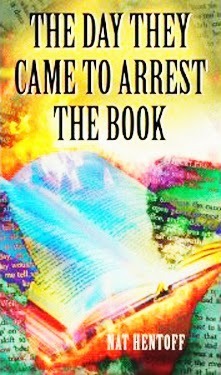
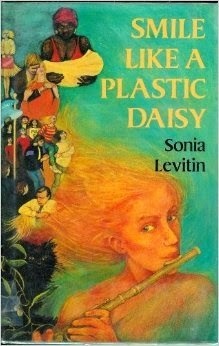
The Day They Came to Arrest the Book by Nat Hentoff: Students and faculty at a high school become embroiled in a censorship case over "Huckleberry Finn."
Smile Like a Plastic Daisy by Sonia Levitin: A high school senior, concerned about the fight for women's rights, finds herself suspended from school and the focus of community debate following a confrontation at a swim meet during which she removed her shirt.
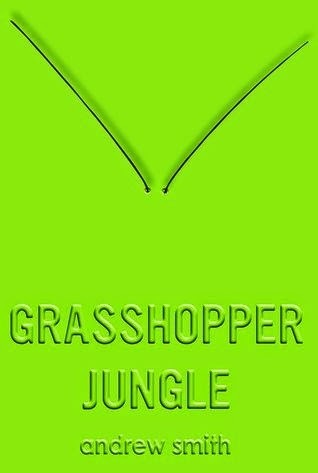
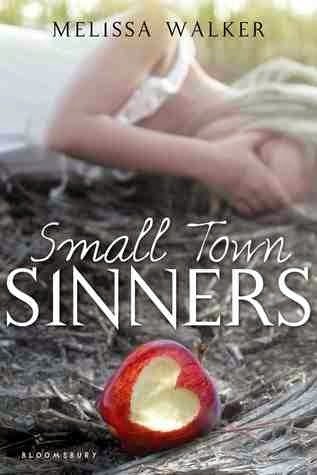
Grasshopper Jungle by Andrew Smith: Austin Szerba narrates the end of humanity as he and his best friend Robby accidentally unleash an army of giant, unstoppable bugs and uncover the secrets of a decades-old experiment gone terribly wrong.
* In this one, The Chocolate War is brought up as a book that's causing problems in the school.
Small Town Sinners by Melissa Walker: High school junior Lacey finds herself questioning the evangelical Christian values she has been raised with when a new boy arrives in her small town.
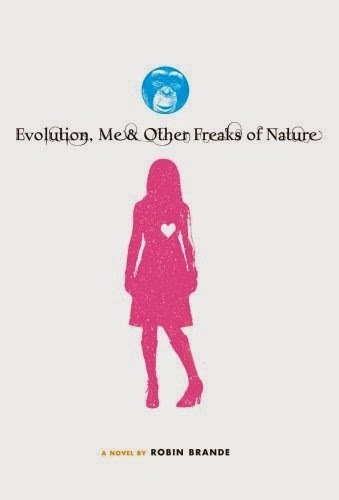
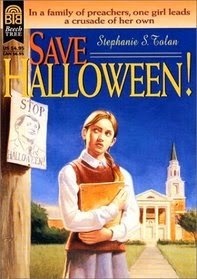
Evolution, Me, & Other Freaks of Nature by Robin Brande: Following her conscience leads high school freshman Mena to clash with her parents and former friends from their conservative Christian church, but might result in better things when she stands up for a teacher who refuses to include "Intelligent Design" in lessons on evolution.
Save Halloween! by Stephanie Tolan: Is Halloween really the devil's holiday? Joanna's family never celebrated Halloween - her father's minister who doesn't like kids dressing up as witches and devils. But nobody worries about Joanna's deep involvement in a class Halloween pageant until Uncle T.T. comes to town with his fiery crusade to abolish Satan's own holiday.
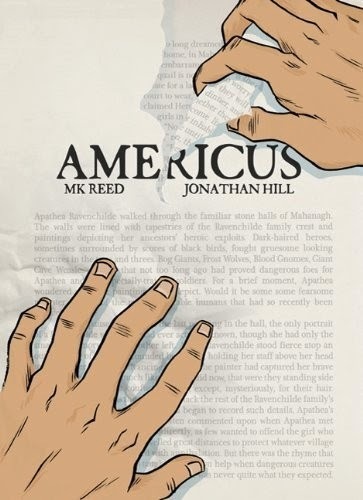
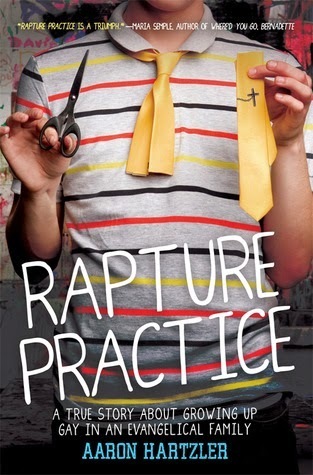
Americus by MK Reed and Jonathan Hill: Oklahoma teen Neal Barton stands up for his favorite fantasy series, The Chronicles of Apathea Ravenchilde, when conservative Christians try to bully the town of Americus into banning it from the public library.
Rapture Practice by Aaron Hartzler: Aaron Hartzler grew up in a home where he was taught that at any moment the Rapture could happen -- that Jesus might come down in the twinkling of an eye and scoop Aaron and his whole family up to Heaven. As a kid, he was thrilled by the idea that every moment of every day might be his last one on Earth. But as Aaron turns sixteen, he finds himself more attached to his earthly life and curious about all the things his family forsakes for the Lord. He begins to realize he doesn't want the Rapture to happen just yet -- not before he sees his first movie, stars in the school play, or has his first kiss. Eventually Aaron makes the plunge from conflicted do-gooder to full-fledged teen rebel. Whether he's sneaking out, making out, or playing hymns with a hangover, Aaron learns a few lessons that can't be found in the Bible. He discovers that the best friends aren't always the ones your mom and dad approve of, the girl of your dreams can just as easily be the boy of your dreams, and the tricky part about believing is that no one can do it for you. In this coming-of-age memoir, Hartzler recalls his teenage journey to become the person he wanted to be, without hurting the family that loved him.
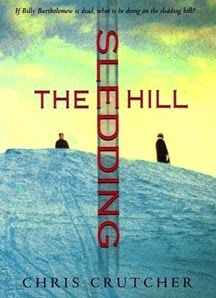

The Sledding Hill by Chris Crutcher: Billy, recently deceased, keeps an eye on his best friend, fourteen-year-old Eddie, who has added to his home and school problems by becoming mute, and helps him stand up to a conservative minister and English teacher who is orchestrating a censorship challenge.
Dancing in Red Shoes Will Kill You by Dorian Cirrone: Sixteen-year-old Kayla, a ballet dancer with very large breasts, and her sister Paterson, an artist, are both helped and hindered by classmates as they confront sexism, conformity, and censorship at their high school for the arts while still managing to maintain their sense of humor.
The Trouble With Mothers by Margery Facklam: What is a boy to do when his teacher-mother's historical novel is given as an example of the kind of "pornography" that should be banned from schools and libraries?







 Related StoriesTeenage CriminalsThe Shadow Hero by Gene Luen Yang & Sonny LiewBuzz-worthy Covers: Bees All Around Us
Related StoriesTeenage CriminalsThe Shadow Hero by Gene Luen Yang & Sonny LiewBuzz-worthy Covers: Bees All Around Us
Of course, this drew a lot of criticism not only because of the attempt to pull a book but also because it happened to be a book featuring a lesbian main character. It would be hard not to see that there was more to this story than meets the eye. A couple of worthwhile reads come from Jill Guccini, one over at Book Riot and one over at After Ellen.
Last week, the board went to make a final decision on the book, and after choosing to put the book back on the reading list, the list was then pulled all together. The board chose to reinstate an old summer reading system, in an exercise of power that undermined the hard work of librarian who created the book list and the educators who know how to work with students reading from it. Of course, the real losers here are the students.
There's a lot more going on than meets the eye, though, and close readers of the article will note that the ACLU became involved in this situation. It's hard not to wonder if the board's decision wasn't exactly what they said. Instead, their decision was a way around a potentially bigger, messier situation. If the board really cared about the profanity issue, as they claim to, then some of the classics that are being taught to students this same age would certainly raise the same sorts of "concerns" that Cameron Post and any of the other YA titles on the list do. So, no, it's not about the language concerns. In this instance, it isn't ignorant to see the potential lawsuits that could have spun from this and by removing the entire list, the board absolves itself a bit from looking like the close-minded, fearful body they've shown themselves to be at this point.
Every year around this time, book challenges seem to dominate the book news world. Leila's done a great job rounding up recent ones and highlighting where they're at at this point in time. I talked a little bit about why the summer and beginning of the school year tend to be favorite times for challenges last fall over at Book Riot, too. This isn't surprising and that might be why it's so disheartening and aggravating as a reader, as a librarian, and as someone who cares about teens.
I applaud those who can keep writing about this topic -- it's something I tackled before but I don't think I can keep talking about. My feelings are exactly the same, and every time a board makes a decision to take books away from kids, I can't help but get upset about how little faith those adults have not just in the teens, but in the educators and librarians who are trained, competent, and eager to talk about these stories with those students. It's a vote made out of fear.
I kept a particularly close eye on the outcome of the vote on Looking for Alaska in Waukesha, Wisconsin last week because it's not far from where I live. The book will remain in the curriculum, but it got me thinking about how issues like this impact the children of parents who are bringing them up. What must it be like to be the teenager who has a mother trying to get a book pulled from the classroom? What are they thinking? What will their experiences be like in the classroom now? How will their peers treat them? There are a million questions there that I think are far more interesting and insightful than the ones about why adults choose to pursue these challenges.
So rather than continue to talk about the issues, I thought it could be interesting to create a book list of YA books that talk about censorship in education or that explore what happens when parents or a school make an effort to keep information and experiences out of the hands of students. In some of these titles, it's the central issue. In others, it's a secondary thread in the story. Not all of these center around book challenges, and many of the titles are older.
If you can think of other YA books where censorship -- in schools or in the community -- or where parents (or students!) are challenging some aspect of curriculum, I'd love to know. Most of these titles were suggested to me via Twitter, so thanks to everyone who threw an idea at me.
All descriptions are from WorldCat.


The Day They Came to Arrest the Book by Nat Hentoff: Students and faculty at a high school become embroiled in a censorship case over "Huckleberry Finn."
Smile Like a Plastic Daisy by Sonia Levitin: A high school senior, concerned about the fight for women's rights, finds herself suspended from school and the focus of community debate following a confrontation at a swim meet during which she removed her shirt.


Grasshopper Jungle by Andrew Smith: Austin Szerba narrates the end of humanity as he and his best friend Robby accidentally unleash an army of giant, unstoppable bugs and uncover the secrets of a decades-old experiment gone terribly wrong.
* In this one, The Chocolate War is brought up as a book that's causing problems in the school.
Small Town Sinners by Melissa Walker: High school junior Lacey finds herself questioning the evangelical Christian values she has been raised with when a new boy arrives in her small town.


Evolution, Me, & Other Freaks of Nature by Robin Brande: Following her conscience leads high school freshman Mena to clash with her parents and former friends from their conservative Christian church, but might result in better things when she stands up for a teacher who refuses to include "Intelligent Design" in lessons on evolution.
Save Halloween! by Stephanie Tolan: Is Halloween really the devil's holiday? Joanna's family never celebrated Halloween - her father's minister who doesn't like kids dressing up as witches and devils. But nobody worries about Joanna's deep involvement in a class Halloween pageant until Uncle T.T. comes to town with his fiery crusade to abolish Satan's own holiday.


Americus by MK Reed and Jonathan Hill: Oklahoma teen Neal Barton stands up for his favorite fantasy series, The Chronicles of Apathea Ravenchilde, when conservative Christians try to bully the town of Americus into banning it from the public library.
Rapture Practice by Aaron Hartzler: Aaron Hartzler grew up in a home where he was taught that at any moment the Rapture could happen -- that Jesus might come down in the twinkling of an eye and scoop Aaron and his whole family up to Heaven. As a kid, he was thrilled by the idea that every moment of every day might be his last one on Earth. But as Aaron turns sixteen, he finds himself more attached to his earthly life and curious about all the things his family forsakes for the Lord. He begins to realize he doesn't want the Rapture to happen just yet -- not before he sees his first movie, stars in the school play, or has his first kiss. Eventually Aaron makes the plunge from conflicted do-gooder to full-fledged teen rebel. Whether he's sneaking out, making out, or playing hymns with a hangover, Aaron learns a few lessons that can't be found in the Bible. He discovers that the best friends aren't always the ones your mom and dad approve of, the girl of your dreams can just as easily be the boy of your dreams, and the tricky part about believing is that no one can do it for you. In this coming-of-age memoir, Hartzler recalls his teenage journey to become the person he wanted to be, without hurting the family that loved him.


The Sledding Hill by Chris Crutcher: Billy, recently deceased, keeps an eye on his best friend, fourteen-year-old Eddie, who has added to his home and school problems by becoming mute, and helps him stand up to a conservative minister and English teacher who is orchestrating a censorship challenge.
Dancing in Red Shoes Will Kill You by Dorian Cirrone: Sixteen-year-old Kayla, a ballet dancer with very large breasts, and her sister Paterson, an artist, are both helped and hindered by classmates as they confront sexism, conformity, and censorship at their high school for the arts while still managing to maintain their sense of humor.
The Trouble With Mothers by Margery Facklam: What is a boy to do when his teacher-mother's historical novel is given as an example of the kind of "pornography" that should be banned from schools and libraries?







 Related StoriesTeenage CriminalsThe Shadow Hero by Gene Luen Yang & Sonny LiewBuzz-worthy Covers: Bees All Around Us
Related StoriesTeenage CriminalsThe Shadow Hero by Gene Luen Yang & Sonny LiewBuzz-worthy Covers: Bees All Around Us
Published on July 27, 2014 22:00
This Week In Reading: Volume IV

This week was a fun one with the mailbox. I don't tend to see a ton of books show up at the same time, but this week, I got four or five separate book surprises. Some were duplicates of things I've already read (which rarely happens) and I've already shipped those off to other people who'll give them good homes and reads.
In the mail this week: Hell Hole by Gina Damico, Ask The Dark by Henry Turner, The Perfect Place by Teresa Harris, Mortal Heart by Robin LaFevers, Vivian Versus the Apocalypse by Katie Coyle (which I am really, really excited about), Zac & Mia by AJ Betts, The Question of Miracles by Elana K. Arnold, The Dead I Know by Scot Gardner, In Real Life by Cory Doctorow and Jen Wang, Night Sky by Suzanne and Melanie Brockmann, H2O by Virginia Bergin, and Taking Hold by Francisco Jimenez. I also got a copy of Alethea Kontis's Dearest and finished copies of The Girl From the Well by Rin Chupecho and Blind by Rachel DeWoskin -- Kontis's book went directly to Kimberly, and the other two are books I already read, so they went to other readers.
As far as reading this week, I finished three books:

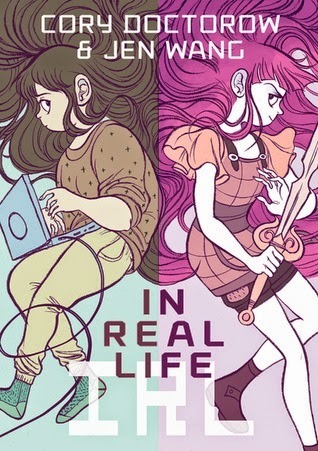
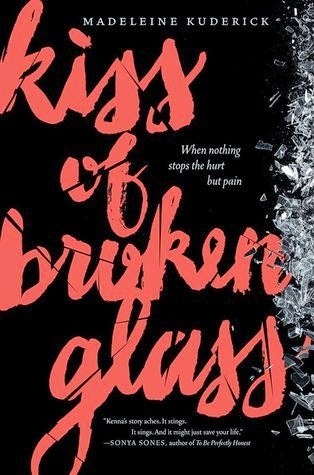
Anatomy of a Single Girl by Daria Snadowsky: This one didn't have the same magic for me that Anatomy of a Boyfriend did, but I still liked it. I plan on writing about both books in more depth soon. I've had a post about female sexuality in YA brewing in my head for a while now.
In Real Life by Cory Doctorow and Jen Wang (October): I liked, but didn't love, this graphic novel about social justice, economics, and gaming. I thought the illustrations were fantastic, though, and I want to seek out more of Wang's work. I will be writing more about this book, and it left me thinking a lot about the metaphor (and non-metaphor!) of gaming in YA. This is the second book this year I've read where gaming plays a role in talking about social politics, which is a fascinating concept.
Kiss of Broken Glass by Madeleine Kuderick (September): A verse novel about a girl who self-harms to fit in and subsequently gets "Baker Acted." I had no idea what the Baker Act was so I'm glad I learned that, but the book otherwise left me underwhelmed.
Reading from around the web this week:
This interview with Roxane Gay in the New York Times Magazine is really great. I didn't realize the history of TMZ -- yes, that TMZ -- could be so interesting or engaging. But it is! Maybe the parts I found most interesting were about how bloggers were where the idea began and who the target demographic for TMZ is. Sarah Dessen's honesty in 5 fun facts about books she's abandoned is really refreshing. I think there's a tendency to think writing books is easy or fast, and it's nice when authors like Dessen, who are so successful, talk about the very human side of it all.
The US Department of Labor picked "Bartleby the Scrivener" as one of the "Books That Shaped Work in America." Clearly, they haven't read it.
I'm not a bookplate user and never have been, but I lived with a girl who loved them and used them in college. This history of the bookplate is worth reading. I never thought about this particular microhistory nor what bookplates represented to readers in previous eras. How about some books on book covers? This piece about how we love and we hate pleasure reading is really great.







 Related StoriesThis Week in Reading: Volume IIIThis Week in Reading: Volume IIThis Week in Reading: Volume I
Related StoriesThis Week in Reading: Volume IIIThis Week in Reading: Volume IIThis Week in Reading: Volume I
Published on July 27, 2014 06:16
July 24, 2014
At Book Riot This Week (& Changes at Stacked)
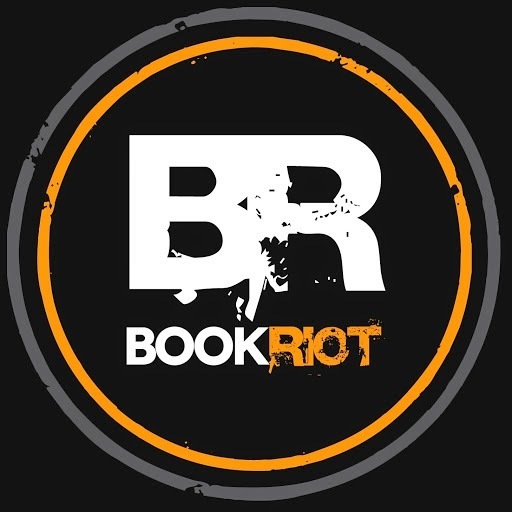
We're making some slight changes at Stacked. For most of the time we've been blogging, we've been able to write 5 new posts every single week and sometimes more. But with writing at Book Riot regularly now, I'm finding that my energy to write at the end of the day is getting lower. It's not a lack of ideas (if anything, my list of what I want to write is growing wildly) but rather, time and energy. Kimberly and I are both of the mind that when we're tired at the end of the day, it's more enjoyable to read than it is to try to write a blog post that isn't well-done or worthwhile. So, we're going to move to a 4 new posts a week plan, Monday through Thursday. We'll do roundups of our writing elsewhere on Fridays, so there's still something here to read. It's my hope to continue doing the Sunday "This Week in Reading," as well.
With that, here's a look at what I wrote over at Book Riot this week:

Bob's (Literary) Burger of the Day -- a look at the literary references from one of my new favorite shows, Bob's Burgers.
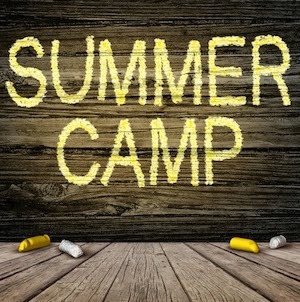
3 On A YA Theme: Summer Camp -- I mentioned last week I was kicking off a new weekly feature at Book Riot, and here it is. I'll be picking a theme every week and writing about three books (or other bookish things) relating to it. This week, three summer camp themed novels. I'm always happy when people drop other suggestions in the comments, so feel free to leave other summer camp titles there or other books that fit future themes.

Book Fetish, Volume 121 -- This is the last time I'll be doing Book Fetish regularly. I'm doing Book Fetish-y stuff over on Book Riot's Pinterest account, and I plan on incorporating a bit of it into 3 on a Theme. I did end up breaking down and buying one of these lovely book necklaces.







 Related StoriesRecently at Book RiotAn Interview with Laurie Halse Anderson at Book RiotTaking Contemporary YA to Book Riot, too
Related StoriesRecently at Book RiotAn Interview with Laurie Halse Anderson at Book RiotTaking Contemporary YA to Book Riot, too
Published on July 24, 2014 22:00
July 23, 2014
Teenage Criminals
Interested in reading stories about teens who routinely break the law and get away with it? There's something really compelling about these kinds of books. The teens have to be pretty smart to keep up the criminal lifestyle; often the teens are a lot smarter than the adults in the book. What teen doesn't love reading about stupid adults who get their comeuppance served to them from someone under 20? Not only that, the teens beat the system (usually an unjust one) with their shenanigans, which is even more major. I still find it pretty sweet to read about, even though I'm now on the adult end of it.
Today I have a list of books for you featuring teens who are criminals in some way or another (assassins, spies, mobsters, thieves, and the like). Some of the teens are coerced into the criminal lifestyle and would rather just be normal kids; others relish the opportunity and embrace the fact that they can do what a lot of others can't. Descriptions are from Worldcat. Have any others to add? Please let me know in the comments.
First up are a group of books featuring law-breaking teens with superpowers. Let's look at this realistically: if you had superpowers, would you only use them to save lives and other boring things like that? Or would you actually use them to rob banks? Be honest.
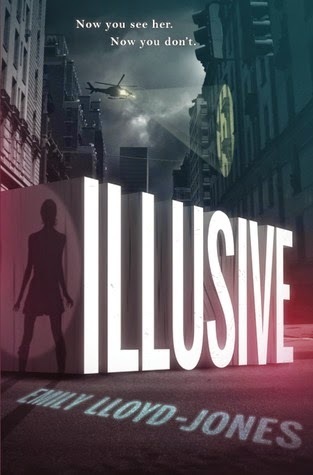
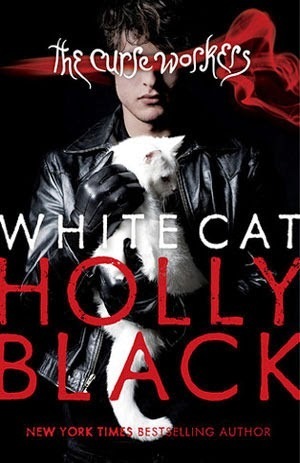
Illusive by Emily Lloyd-Jones
After a vaccine accidentally creates superpowers in a small percentage of the population, seventeen-year-old Ciere, an illusionist, teams up with a group of fellow high-class, super-powered thieves to steal the vaccine's formula while staying one step ahead of mobsters and deadly government agents. Kimberly's review
White Cat by Holly Black
When Cassel Sharpe discovers that his older brothers have used him to carry out their criminal schemes and then stolen his memories, he figures out a way to turn their evil machinations against them. Kimberly's review | Sequels: Red Glove, Black Heart
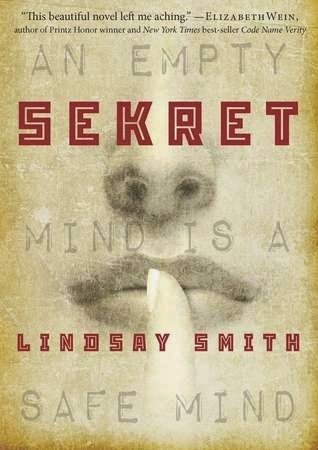
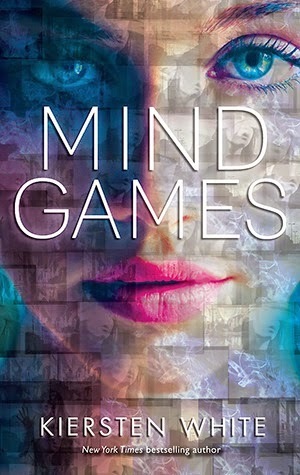
Sekret by Lindsay Smith
Follows a group of psychic teenagers in 1960s Soviet Russia who are forced to use their powers to spy for the KGB. Kimberly's review
Mind Games by Kiersten White
Seventeen-year-old Fia and her sister, Annie, are trapped in a school that uses young female psychics and mind readers as tools for corporate espionage--and if Fia doesn't play by the rules of their deadly game, Annie will be killed. Kimberly's review
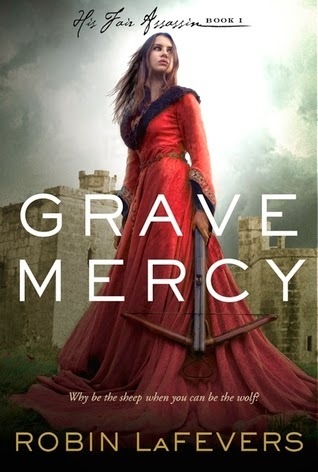
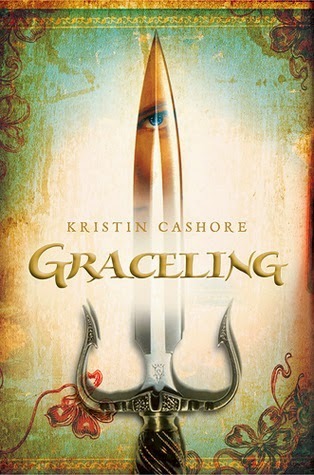
Grave Mercy by Robin LaFevers
In the fifteenth-century kingdom of Brittany, seventeen-year-old Ismae escapes from the brutality of an arranged marriage into the sanctuary of the convent of St. Mortain, where she learns that the god of Death has blessed her with dangerous gifts--and a violent destiny. Kimberly's review | Sequels: Dark Triumph, Mortal Heart
Graceling by Kristin Cashore
In a world where some people are born with extreme and often-feared skills called Graces, Katsa struggles for redemption from her own horrifying Grace, the Grace of killing, and teams up with another young fighter to save their land from a corrupt king.
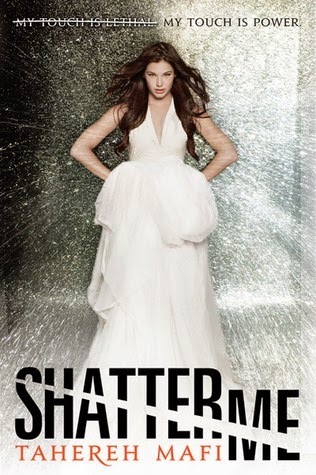
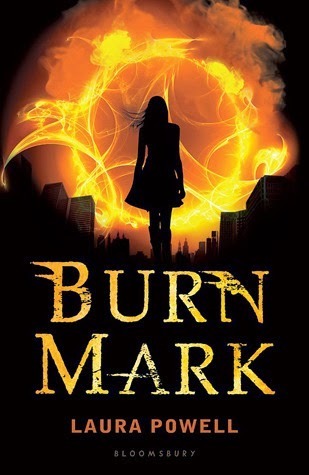
Shatter Me by Tahereh Mafi
Ostracized or incarcerated her whole life, seventeen-year-old Juliette is freed on the condition that she use her horrific abilities in support of The Reestablishment, a postapocalyptic dictatorship, but Adam, the only person ever to show her affection, offers hope of a better future. Sequels: Unravel Me, Ignite Me
Burn Mark by Laura Powell
In an alternate London, England, the lives of a fifteen-year-old girl eagerly awaiting the development of her "fae," or witch abilities, and the son of a man who sentences witches to death by burning, intersect when the son makes a startling discovery. Sequel: Witch Fire
If books about people with regular abilities (smart, but not super-smart; intuitive, but not mind-readers) are more your speed, check these out.
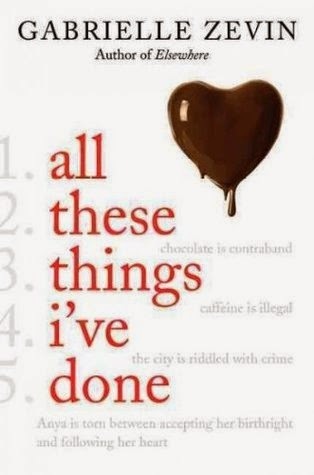
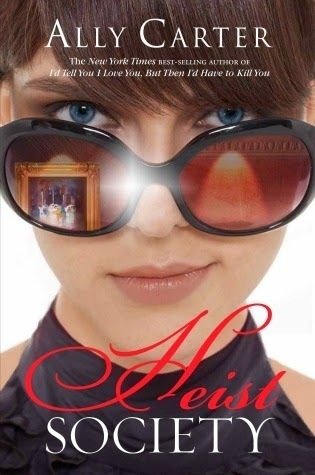
All These Things I've Done by Gabrielle Zevin
In a future where chocolate and caffeine are contraband, teenage cellphone use is illegal, and water and paper are carefully rationed, sixteen-year-old Anya Balanchine finds herself thrust unwillingly into the spotlight as heir apparent to an important New York City crime family. Kimberly's review | Sequels: Because it is My Blood, In the Age of Love and Chocolate
Heist Society by Ally Carter
A group of teenagers uses their combined talents to re-steal several priceless paintings and save fifteen-year-old Kat Bishop's father, himself an international art thief, from a vengeful collector. Sequels: Uncommon Criminals, Perfect Scoundrels
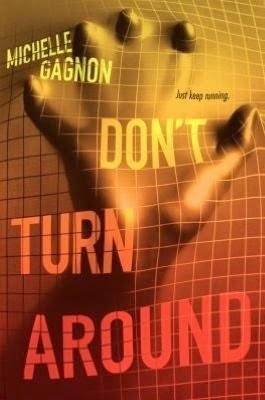
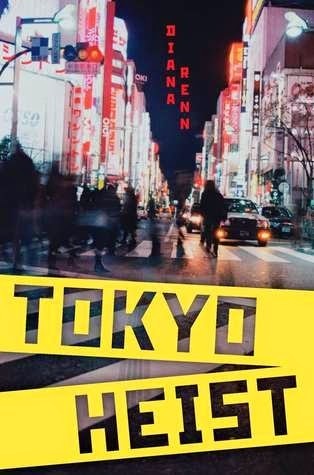
Don't Turn Around by Michelle Gagnon
After waking up on an operating table with no memory of how she got there, Noa must team up with computer hacker Peter to stop a corrupt corporation with a deadly secret.
Tokyo Heist by Diana Renn
After a high-profile art heist of three van Gogh drawings in her home town of Seattle, sixteen-year-old Violet Rossi finds herself in Japan with her artist father, searching for the related van Gogh painting.
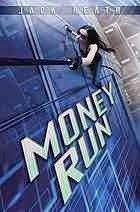
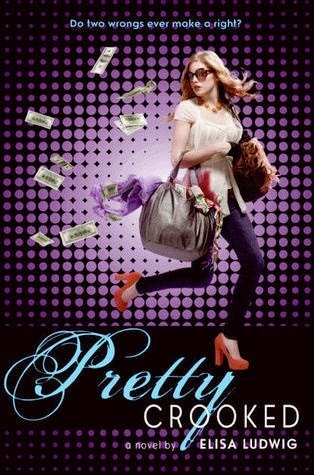
Money Run by Jack Heath
Fifteen-year-olds Ashley and Benjamin are planning the heist of a lifetime, but they are not counting on a hit man who has plans of his own.
Pretty Crooked by Elisa Ludwig
High school sophomore Willa and her artist mother move to Arizona where Willa starts attending an elite prep school after her mother finally sells some paintings, and Willa attempts to even things out by stealing from the rich students and giving to the poor ones. Sequels: Pretty Sly, Pretty Wanted
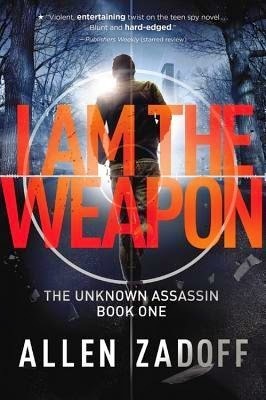
I Am the Weapon (previously Boy Nobody) by Allen Zadoff
Sixteen-year-old Boy Nobody, an assassin controlled by a shadowy government organization, The Program, considers sabotaging his latest mission because his target reminds him of the normal life he craves. Sequel: I Am the Mission







 Related StoriesJuly Debut YA NovelsIllusive by Emily Lloyd-JonesConversion by Katherine Howe
Related StoriesJuly Debut YA NovelsIllusive by Emily Lloyd-JonesConversion by Katherine Howe
Today I have a list of books for you featuring teens who are criminals in some way or another (assassins, spies, mobsters, thieves, and the like). Some of the teens are coerced into the criminal lifestyle and would rather just be normal kids; others relish the opportunity and embrace the fact that they can do what a lot of others can't. Descriptions are from Worldcat. Have any others to add? Please let me know in the comments.
First up are a group of books featuring law-breaking teens with superpowers. Let's look at this realistically: if you had superpowers, would you only use them to save lives and other boring things like that? Or would you actually use them to rob banks? Be honest.


Illusive by Emily Lloyd-Jones
After a vaccine accidentally creates superpowers in a small percentage of the population, seventeen-year-old Ciere, an illusionist, teams up with a group of fellow high-class, super-powered thieves to steal the vaccine's formula while staying one step ahead of mobsters and deadly government agents. Kimberly's review
White Cat by Holly Black
When Cassel Sharpe discovers that his older brothers have used him to carry out their criminal schemes and then stolen his memories, he figures out a way to turn their evil machinations against them. Kimberly's review | Sequels: Red Glove, Black Heart


Sekret by Lindsay Smith
Follows a group of psychic teenagers in 1960s Soviet Russia who are forced to use their powers to spy for the KGB. Kimberly's review
Mind Games by Kiersten White
Seventeen-year-old Fia and her sister, Annie, are trapped in a school that uses young female psychics and mind readers as tools for corporate espionage--and if Fia doesn't play by the rules of their deadly game, Annie will be killed. Kimberly's review


Grave Mercy by Robin LaFevers
In the fifteenth-century kingdom of Brittany, seventeen-year-old Ismae escapes from the brutality of an arranged marriage into the sanctuary of the convent of St. Mortain, where she learns that the god of Death has blessed her with dangerous gifts--and a violent destiny. Kimberly's review | Sequels: Dark Triumph, Mortal Heart
Graceling by Kristin Cashore
In a world where some people are born with extreme and often-feared skills called Graces, Katsa struggles for redemption from her own horrifying Grace, the Grace of killing, and teams up with another young fighter to save their land from a corrupt king.


Shatter Me by Tahereh Mafi
Ostracized or incarcerated her whole life, seventeen-year-old Juliette is freed on the condition that she use her horrific abilities in support of The Reestablishment, a postapocalyptic dictatorship, but Adam, the only person ever to show her affection, offers hope of a better future. Sequels: Unravel Me, Ignite Me
Burn Mark by Laura Powell
In an alternate London, England, the lives of a fifteen-year-old girl eagerly awaiting the development of her "fae," or witch abilities, and the son of a man who sentences witches to death by burning, intersect when the son makes a startling discovery. Sequel: Witch Fire
If books about people with regular abilities (smart, but not super-smart; intuitive, but not mind-readers) are more your speed, check these out.


All These Things I've Done by Gabrielle Zevin
In a future where chocolate and caffeine are contraband, teenage cellphone use is illegal, and water and paper are carefully rationed, sixteen-year-old Anya Balanchine finds herself thrust unwillingly into the spotlight as heir apparent to an important New York City crime family. Kimberly's review | Sequels: Because it is My Blood, In the Age of Love and Chocolate
Heist Society by Ally Carter
A group of teenagers uses their combined talents to re-steal several priceless paintings and save fifteen-year-old Kat Bishop's father, himself an international art thief, from a vengeful collector. Sequels: Uncommon Criminals, Perfect Scoundrels


Don't Turn Around by Michelle Gagnon
After waking up on an operating table with no memory of how she got there, Noa must team up with computer hacker Peter to stop a corrupt corporation with a deadly secret.
Tokyo Heist by Diana Renn
After a high-profile art heist of three van Gogh drawings in her home town of Seattle, sixteen-year-old Violet Rossi finds herself in Japan with her artist father, searching for the related van Gogh painting.


Money Run by Jack Heath
Fifteen-year-olds Ashley and Benjamin are planning the heist of a lifetime, but they are not counting on a hit man who has plans of his own.
Pretty Crooked by Elisa Ludwig
High school sophomore Willa and her artist mother move to Arizona where Willa starts attending an elite prep school after her mother finally sells some paintings, and Willa attempts to even things out by stealing from the rich students and giving to the poor ones. Sequels: Pretty Sly, Pretty Wanted

I Am the Weapon (previously Boy Nobody) by Allen Zadoff
Sixteen-year-old Boy Nobody, an assassin controlled by a shadowy government organization, The Program, considers sabotaging his latest mission because his target reminds him of the normal life he craves. Sequel: I Am the Mission







 Related StoriesJuly Debut YA NovelsIllusive by Emily Lloyd-JonesConversion by Katherine Howe
Related StoriesJuly Debut YA NovelsIllusive by Emily Lloyd-JonesConversion by Katherine Howe
Published on July 23, 2014 22:00



